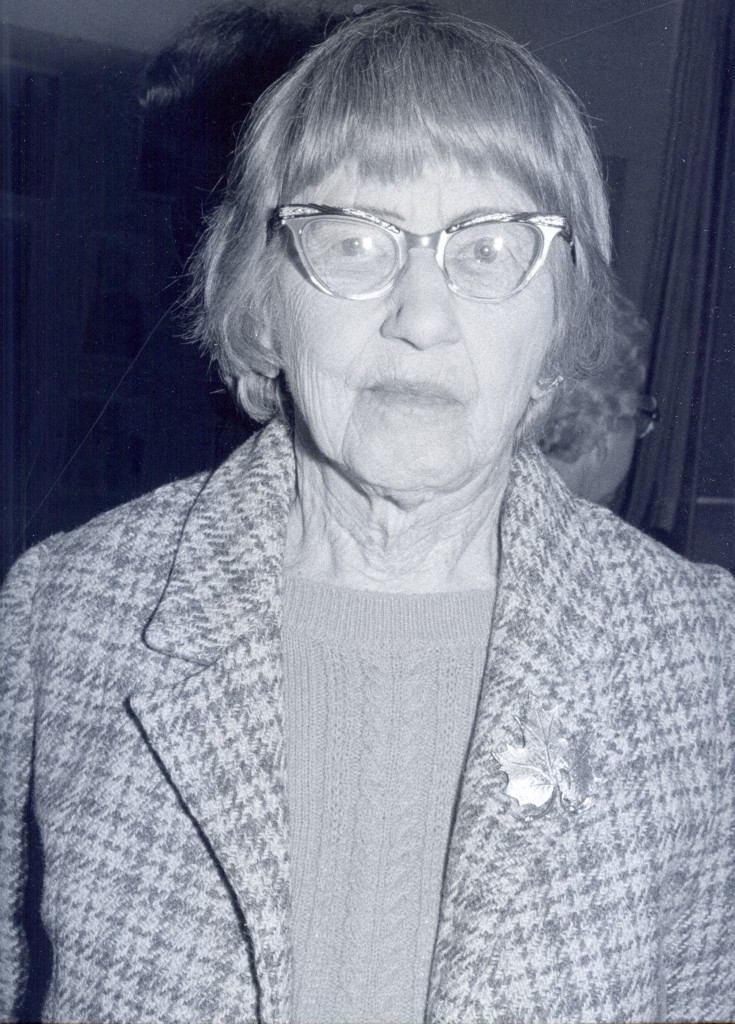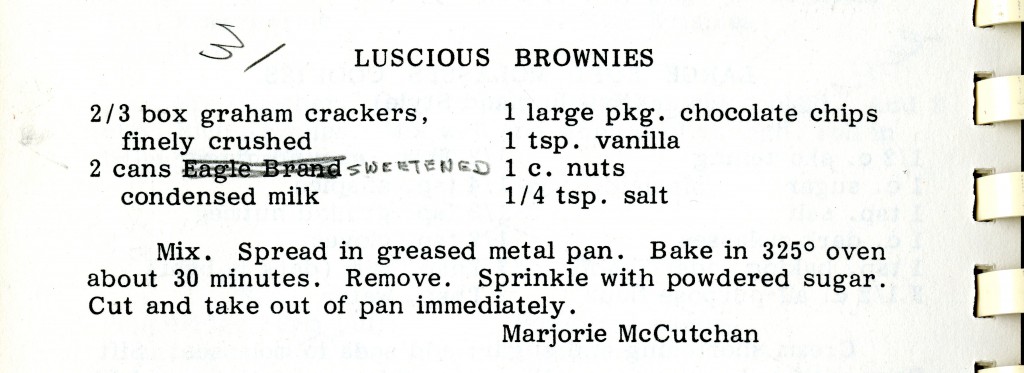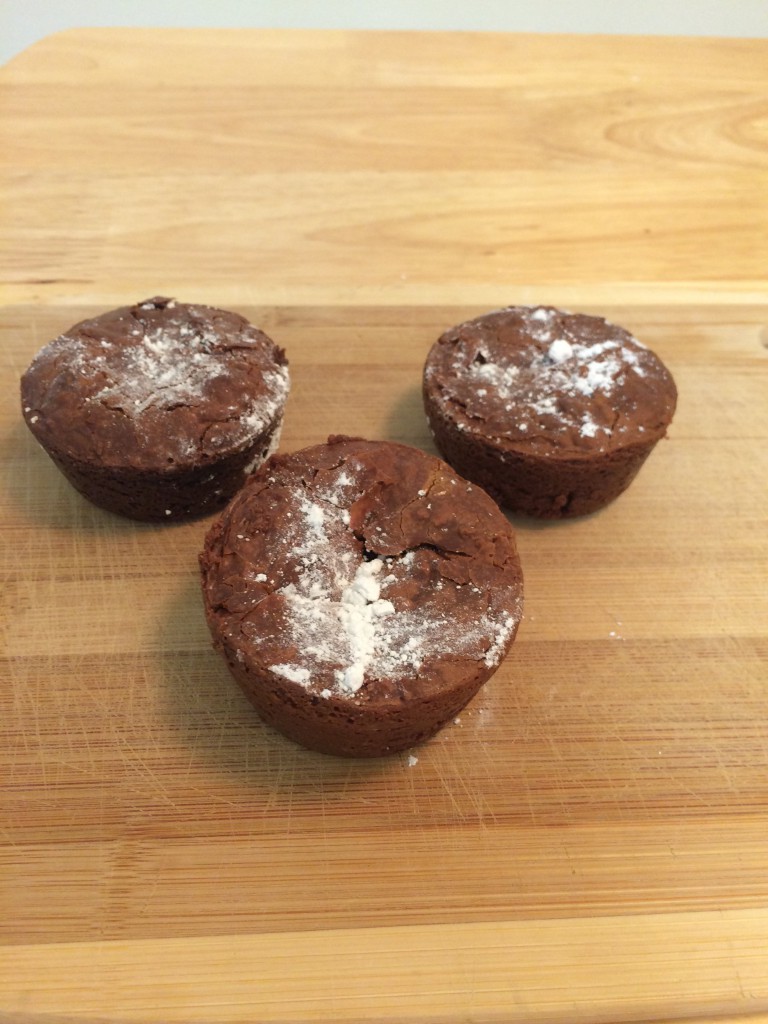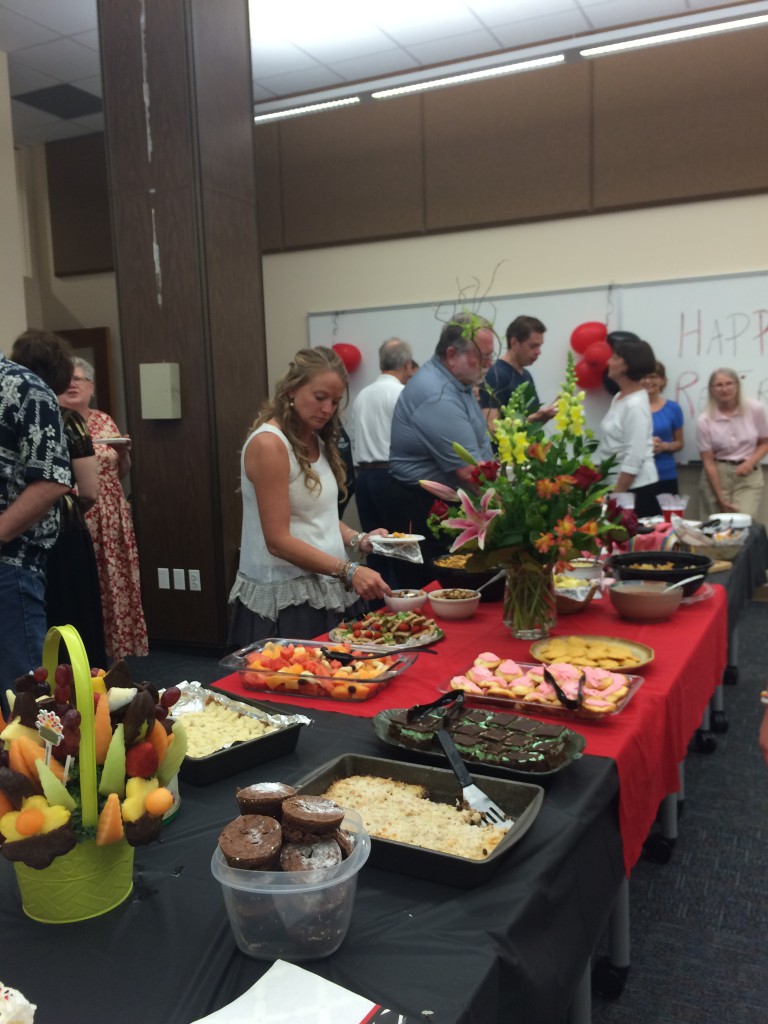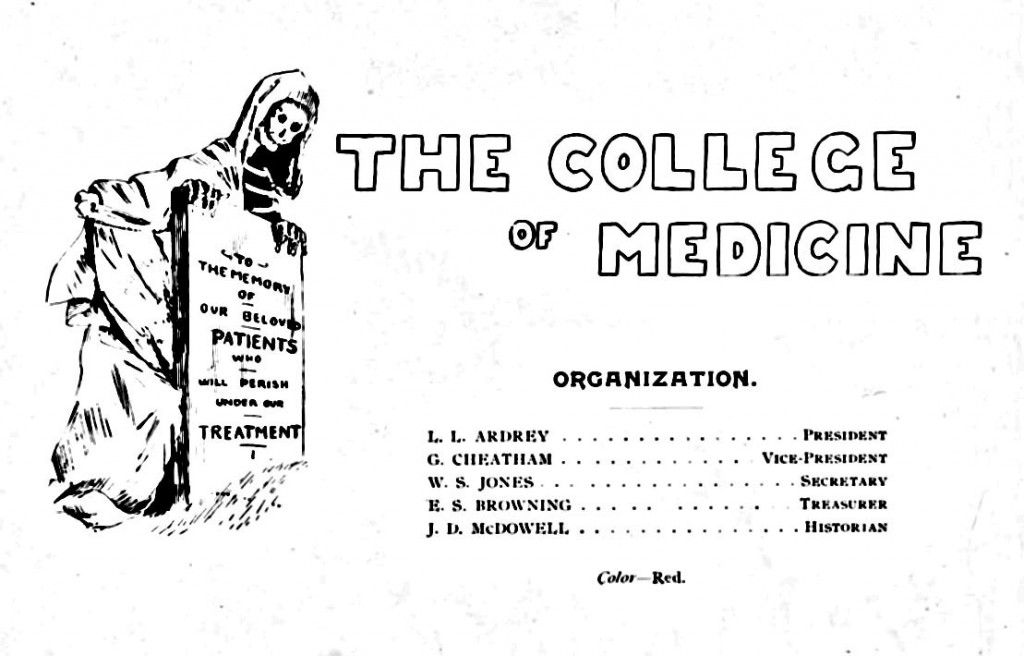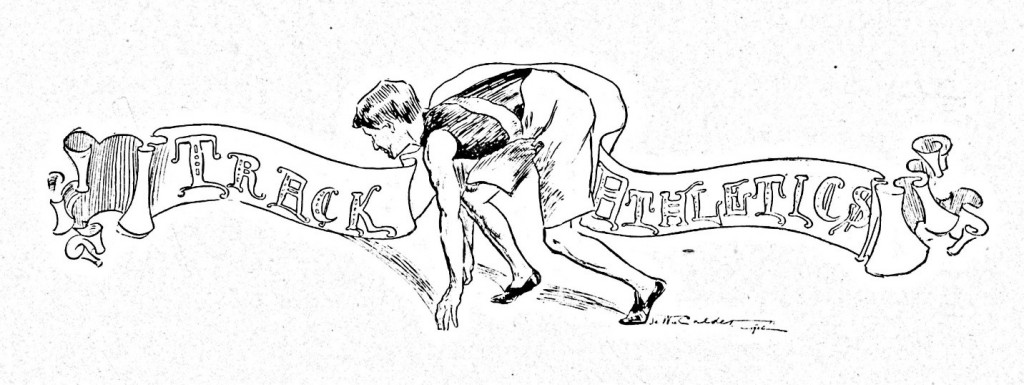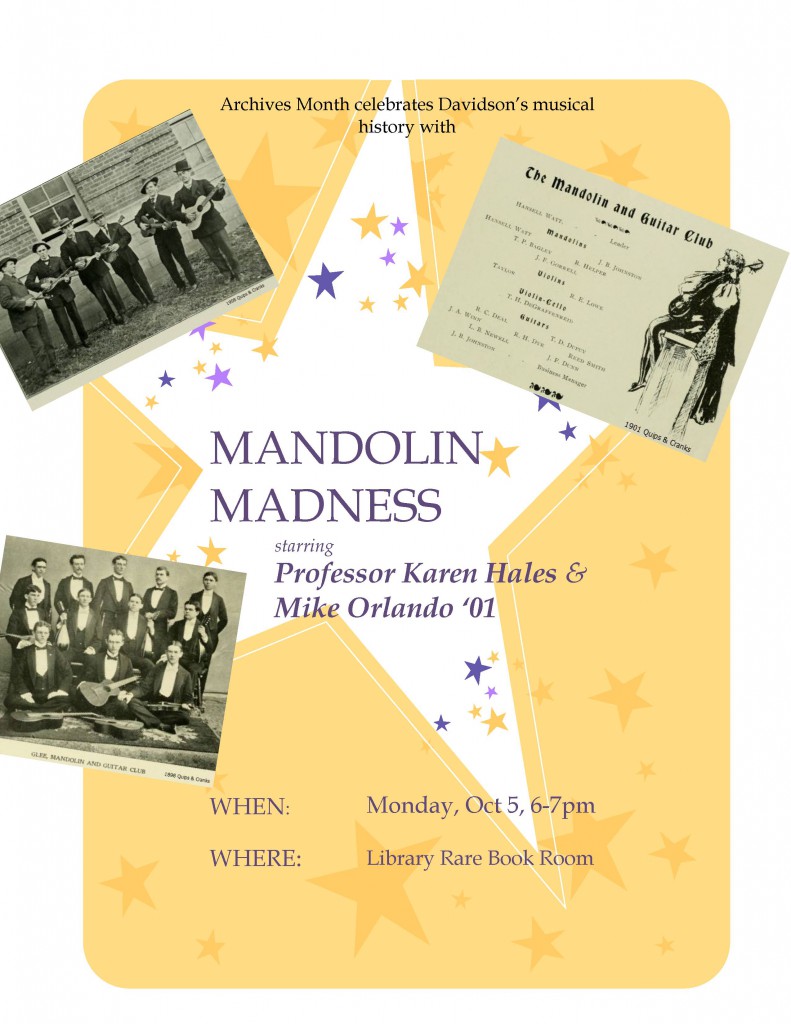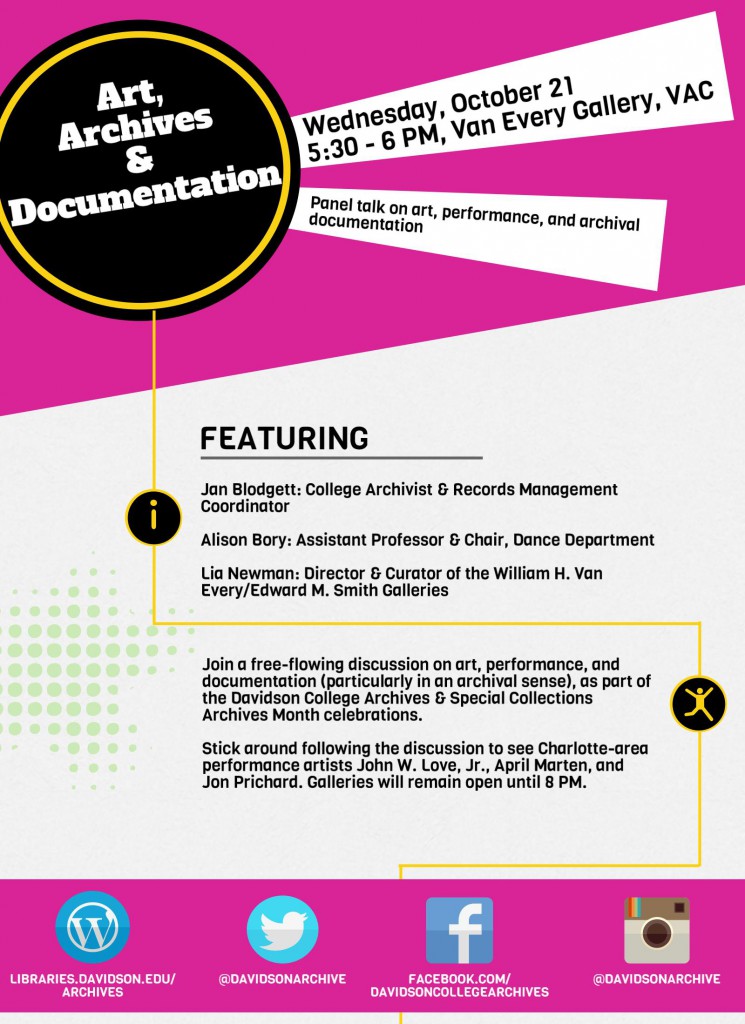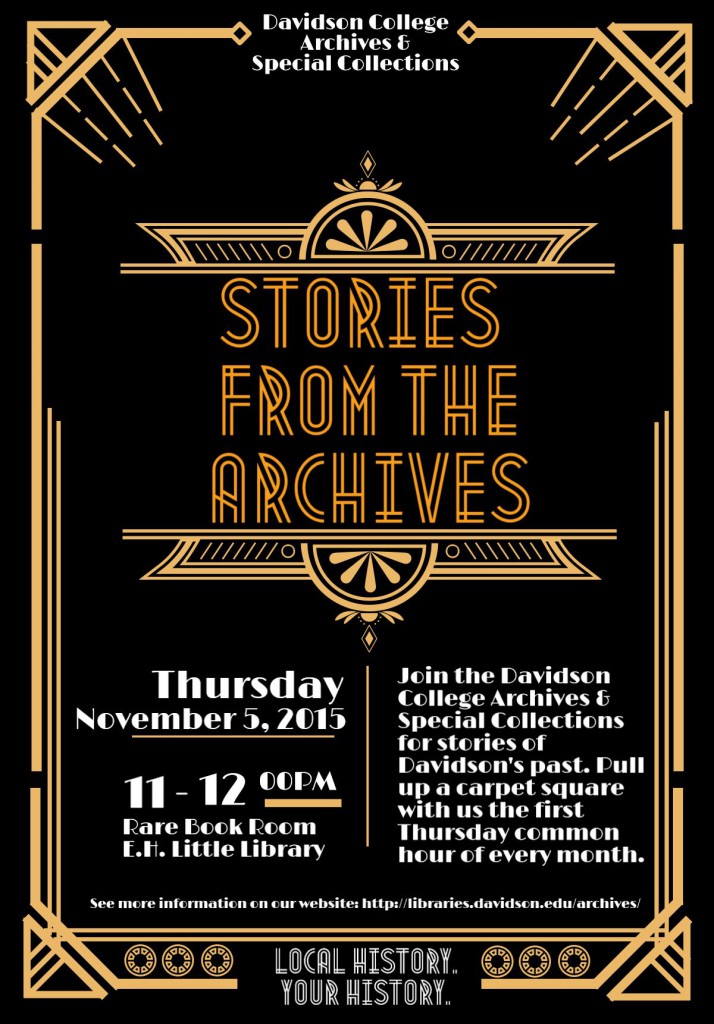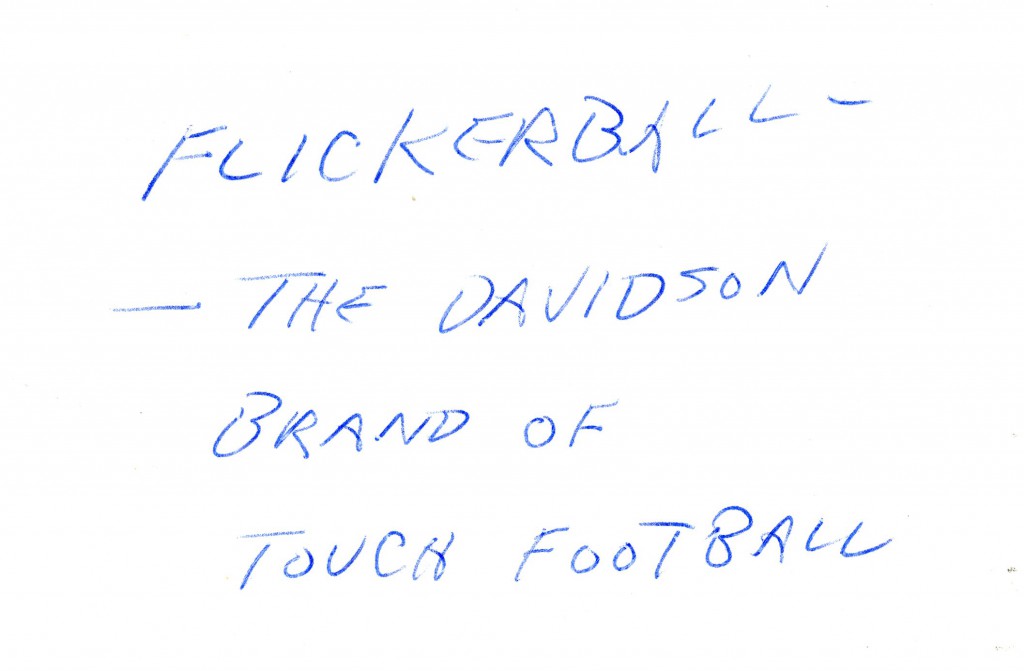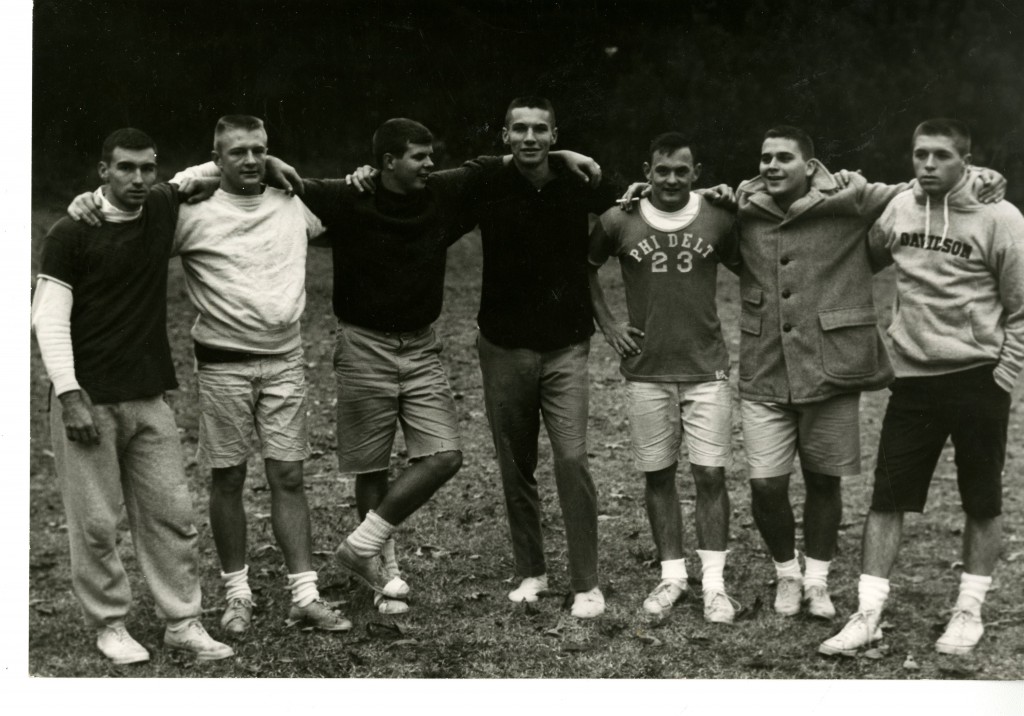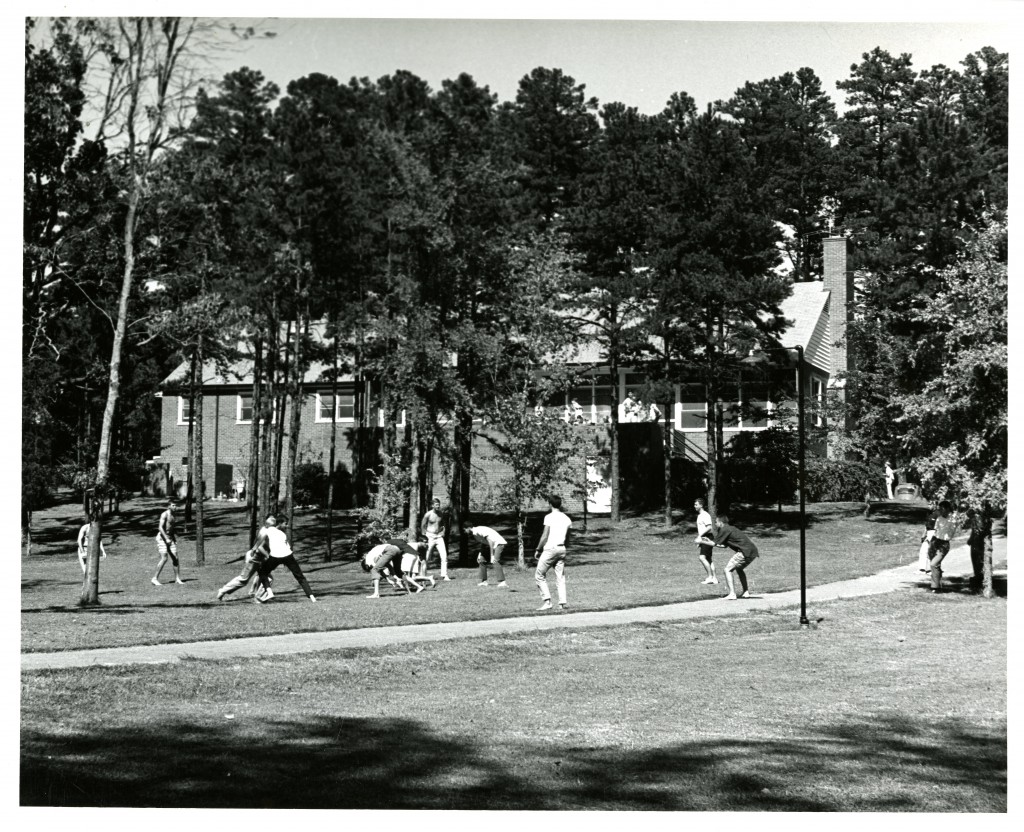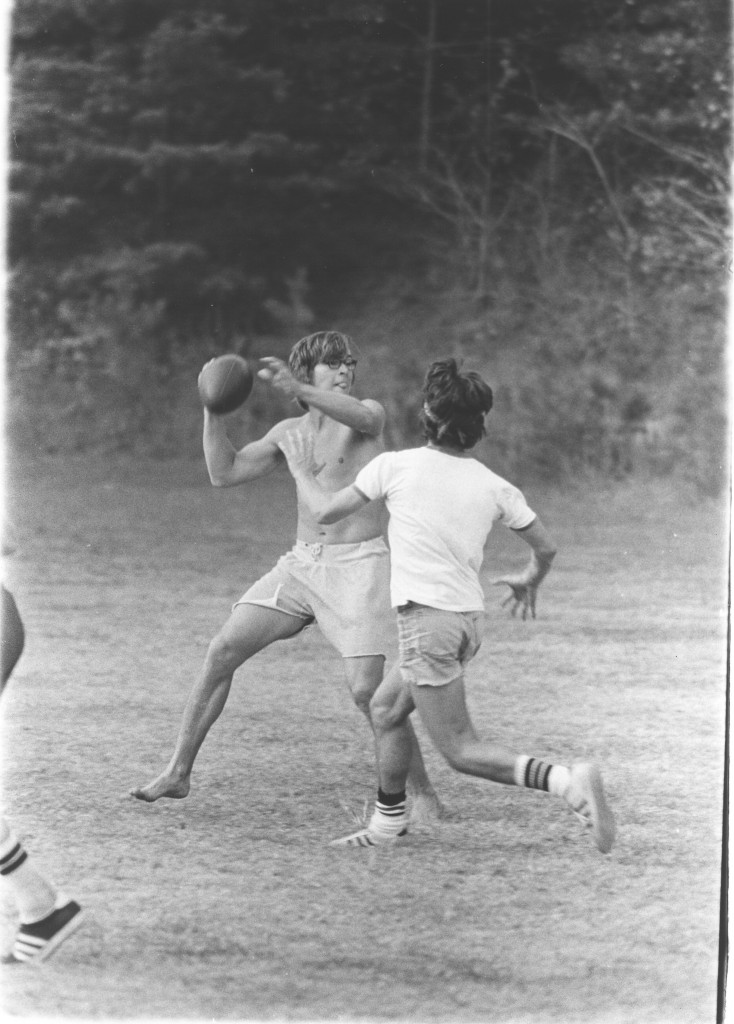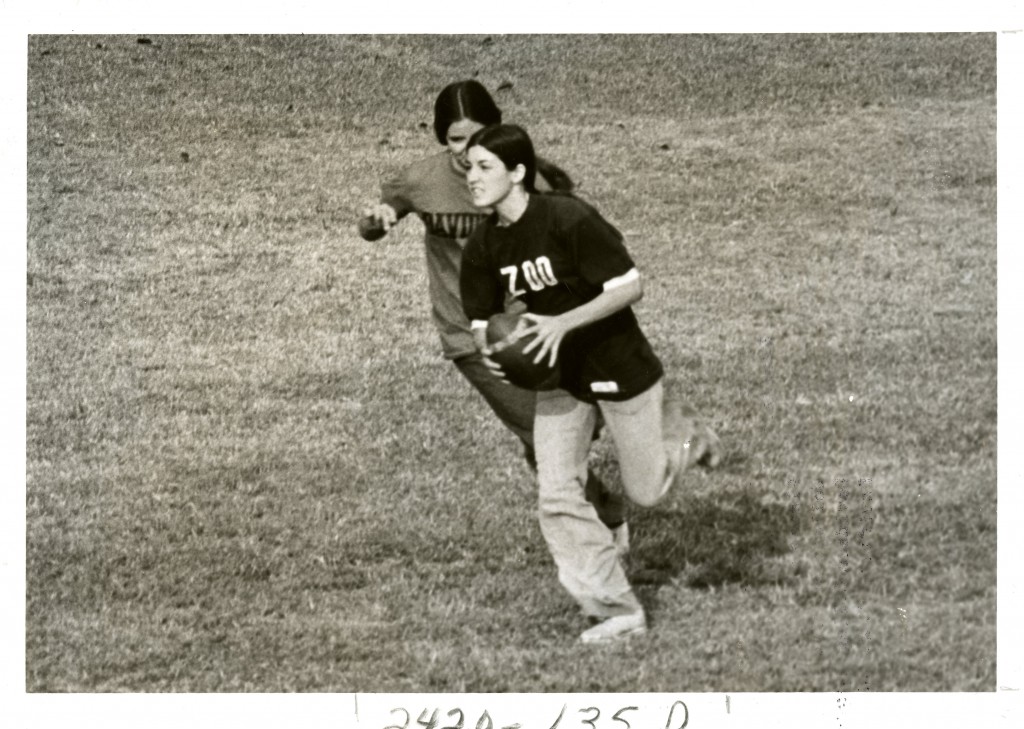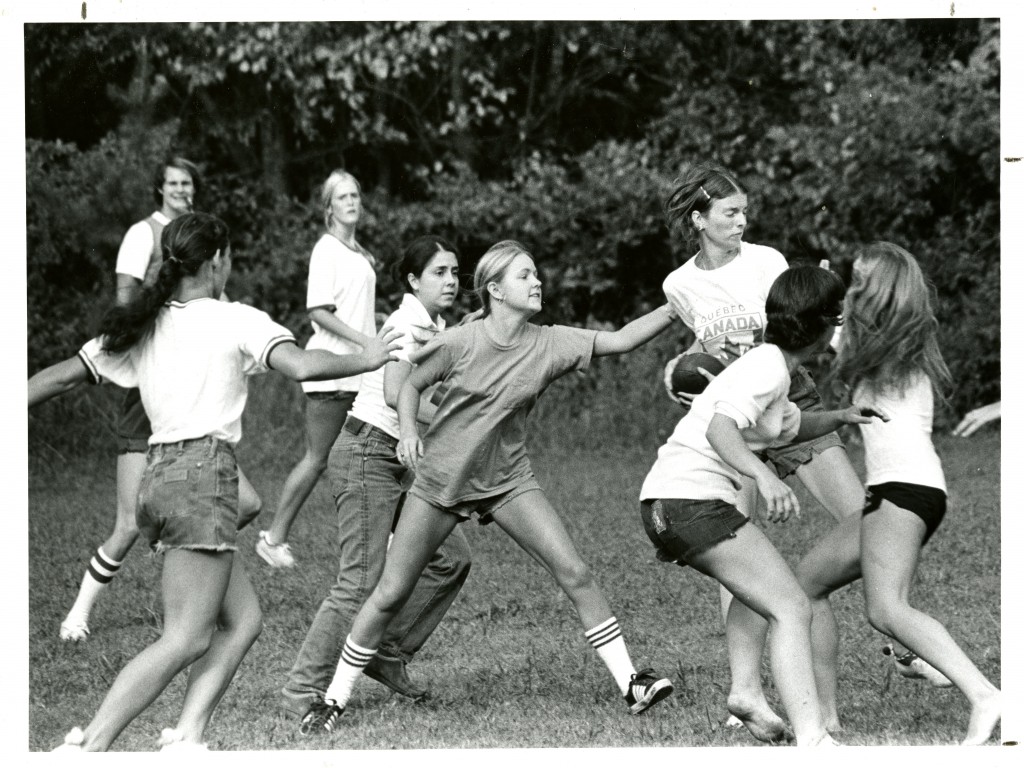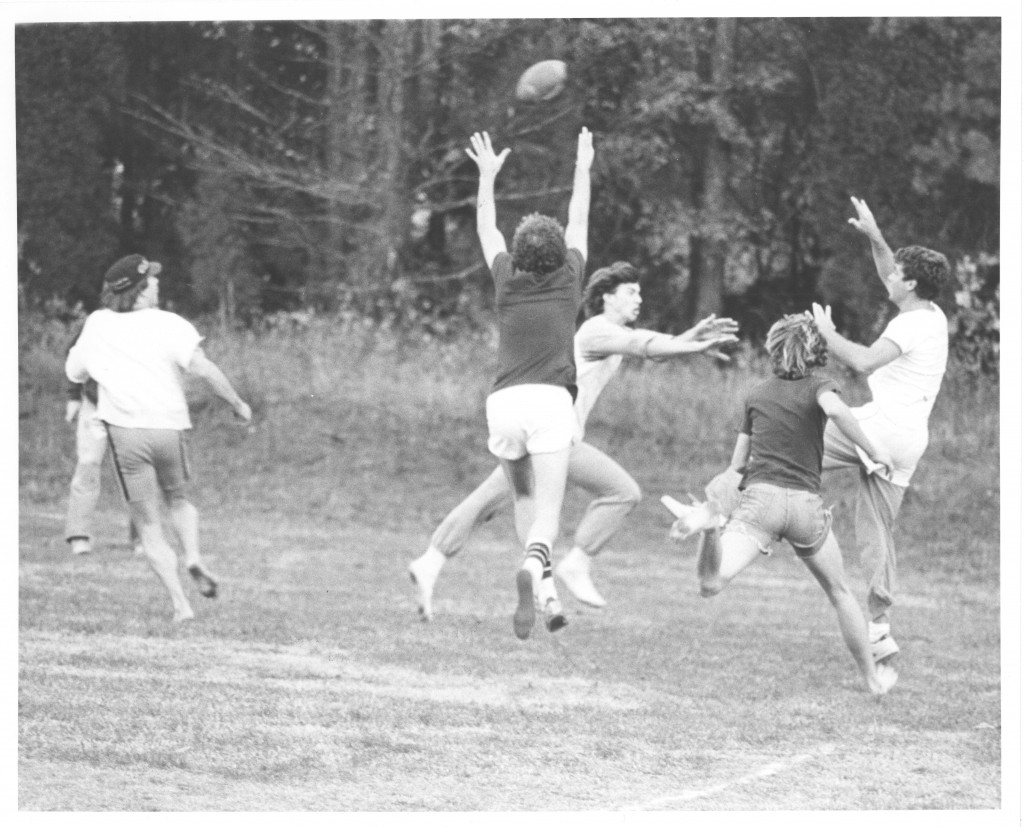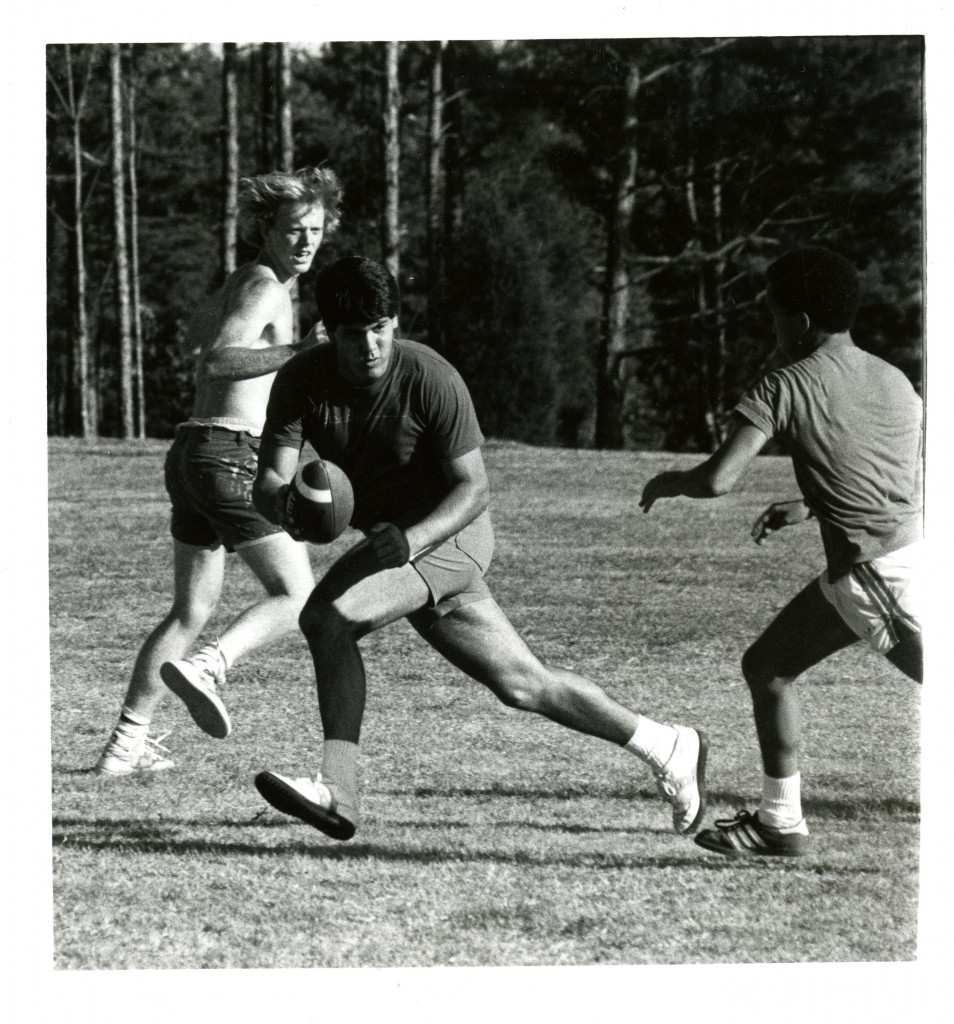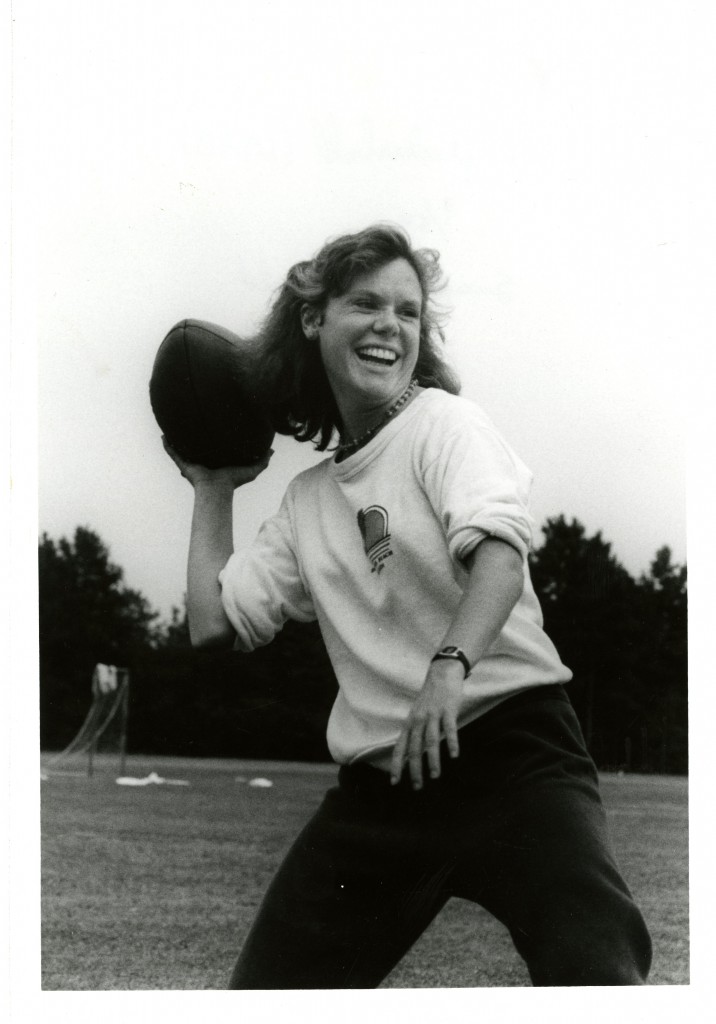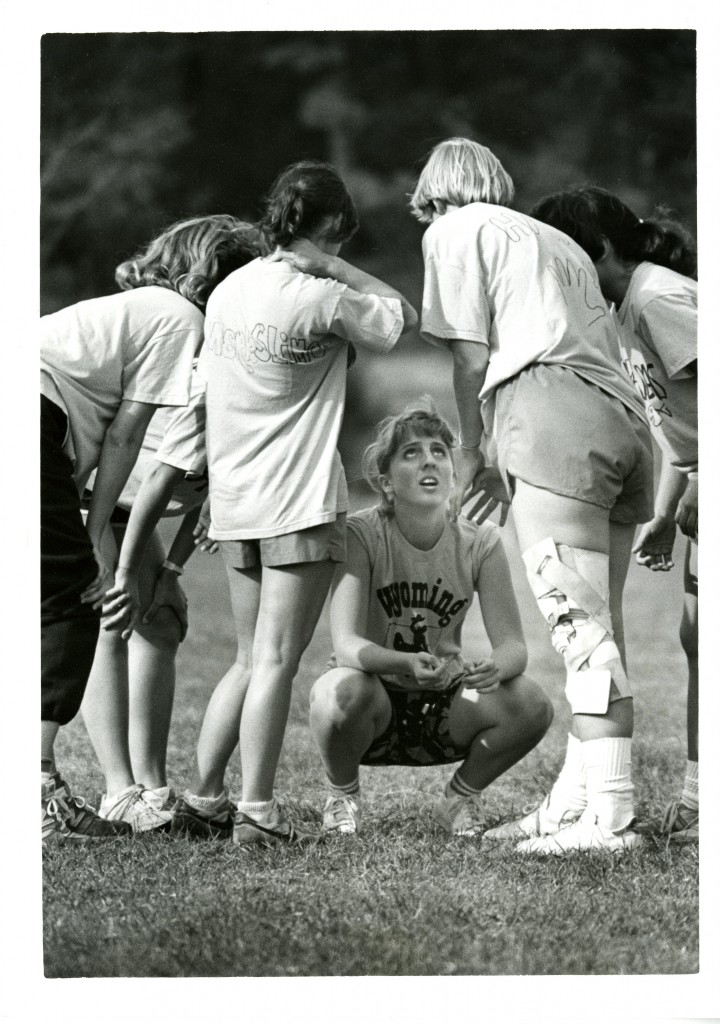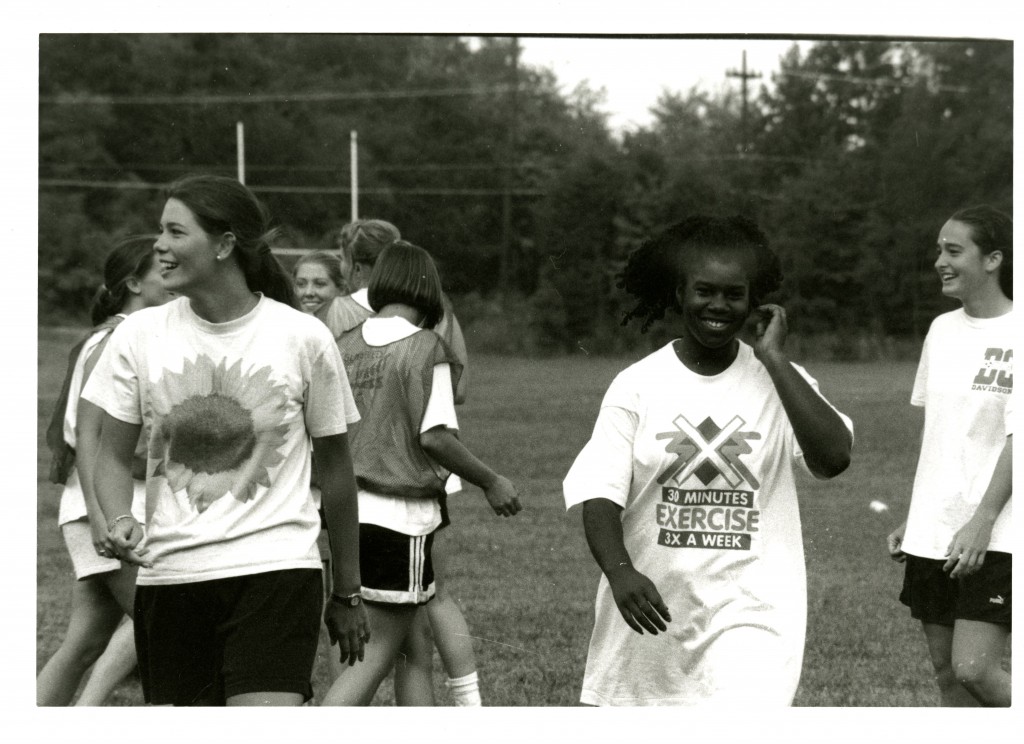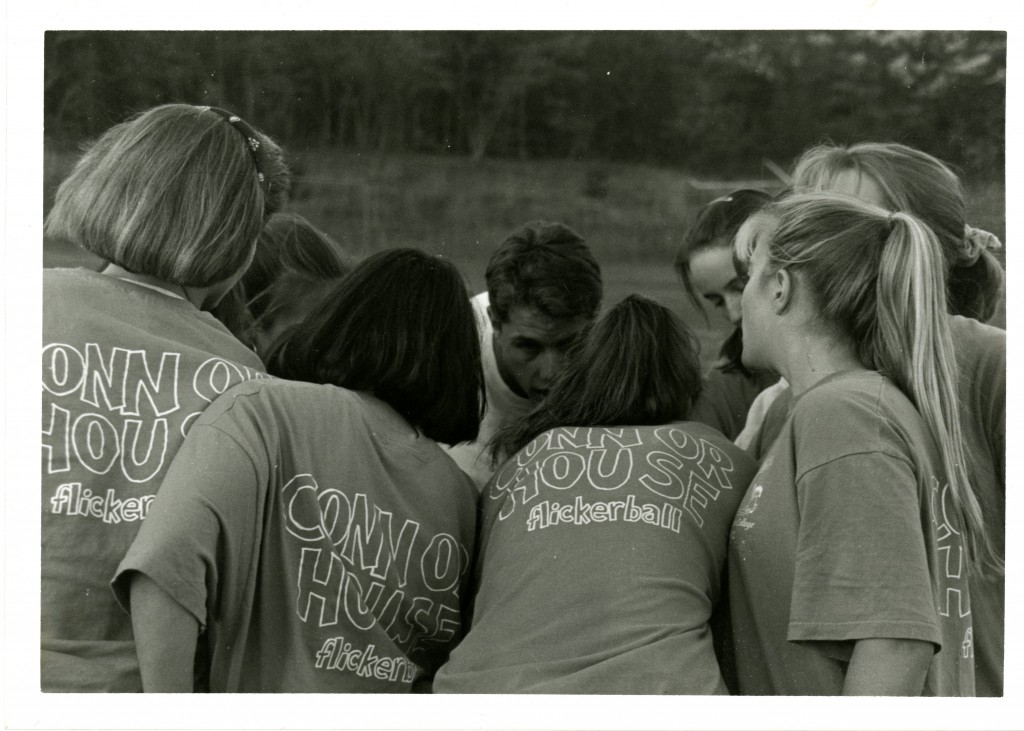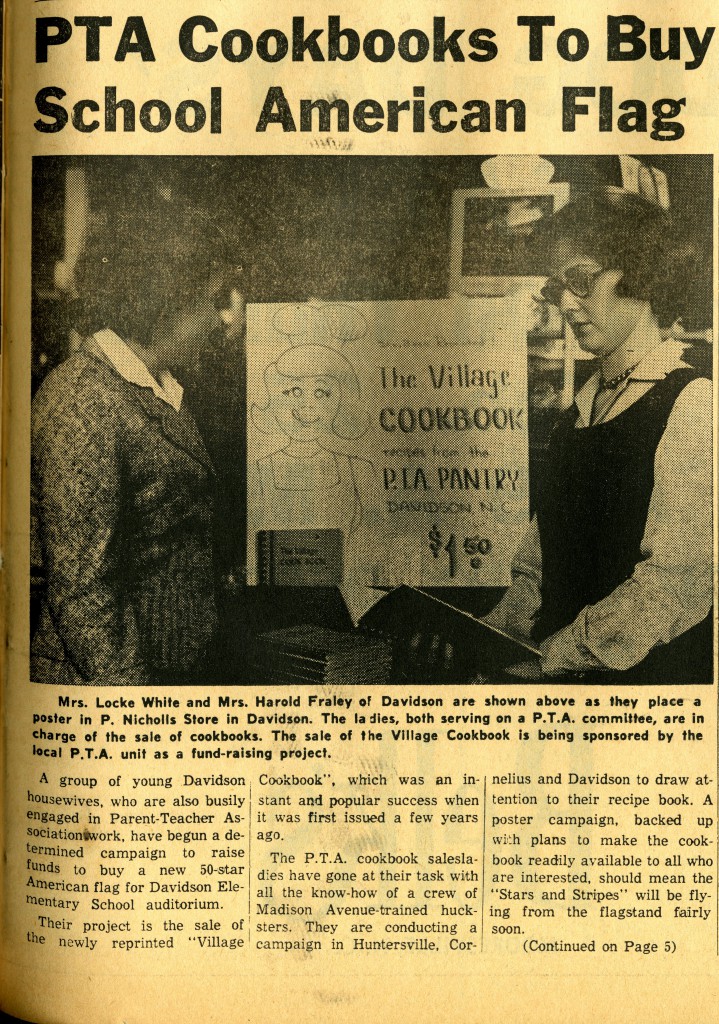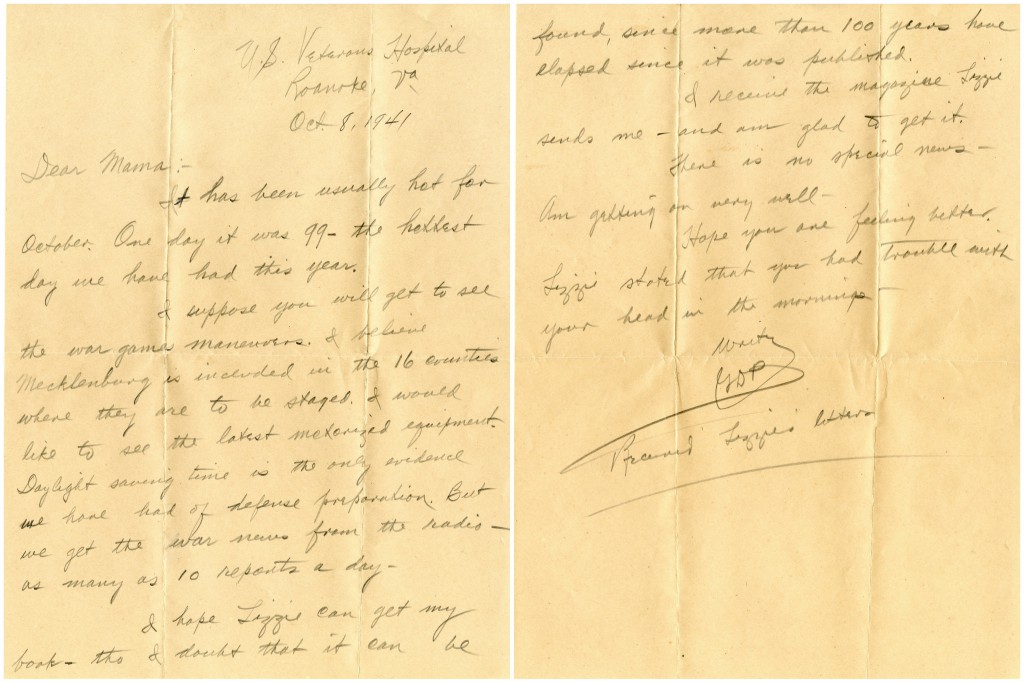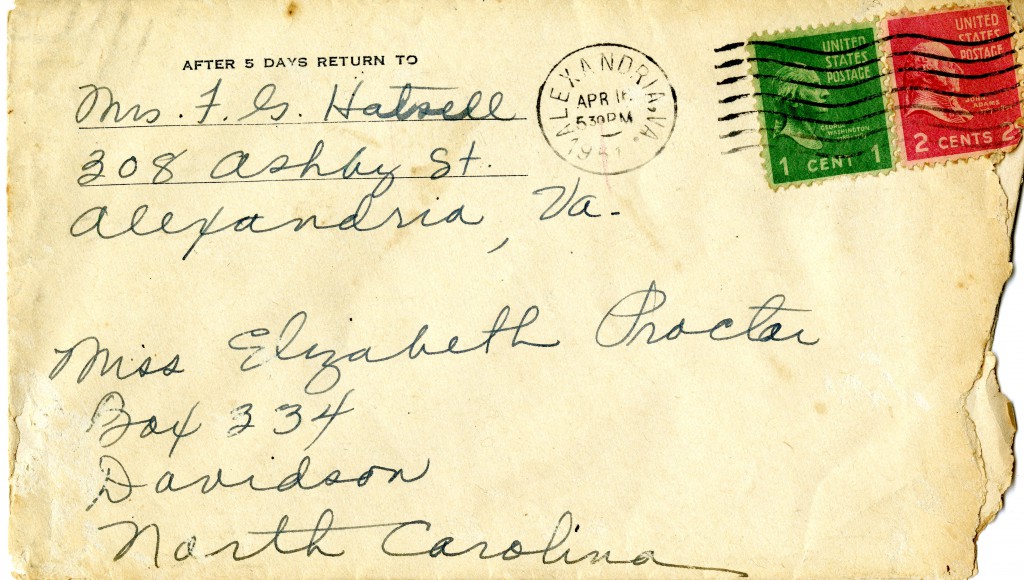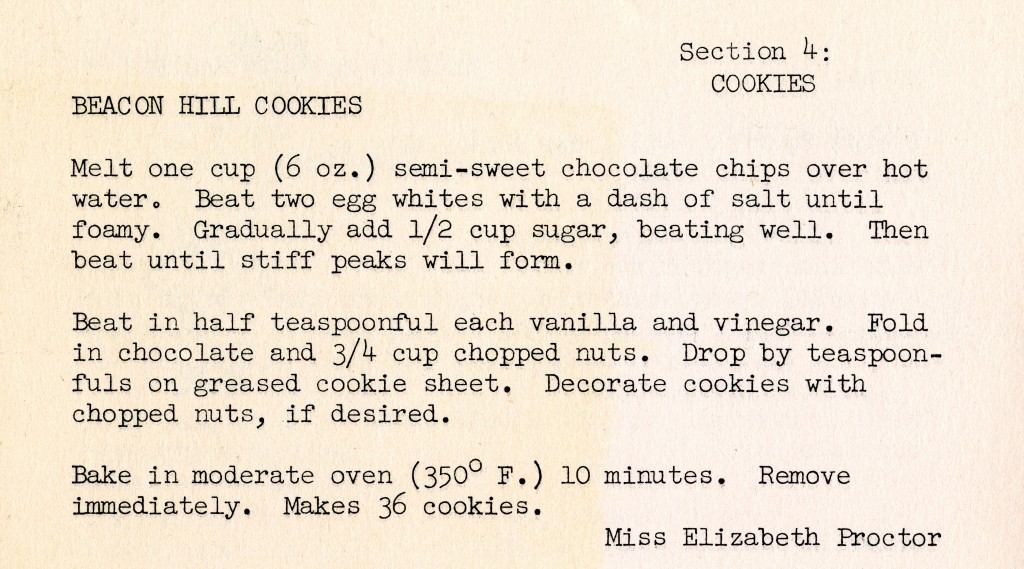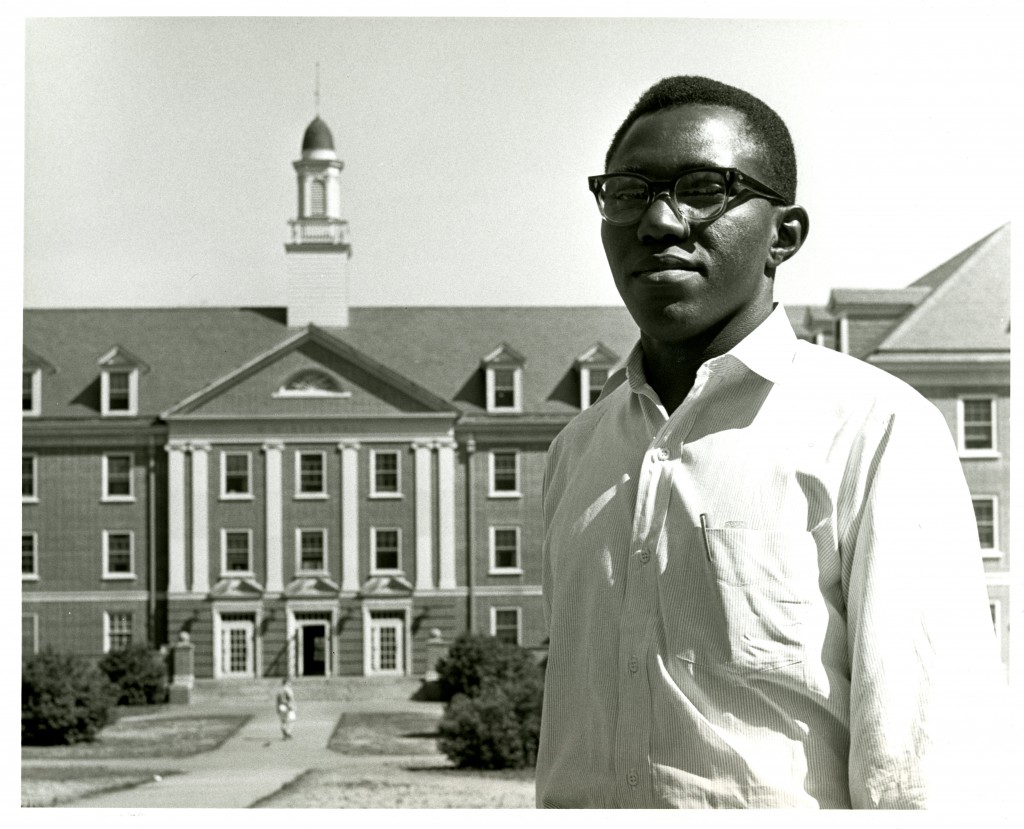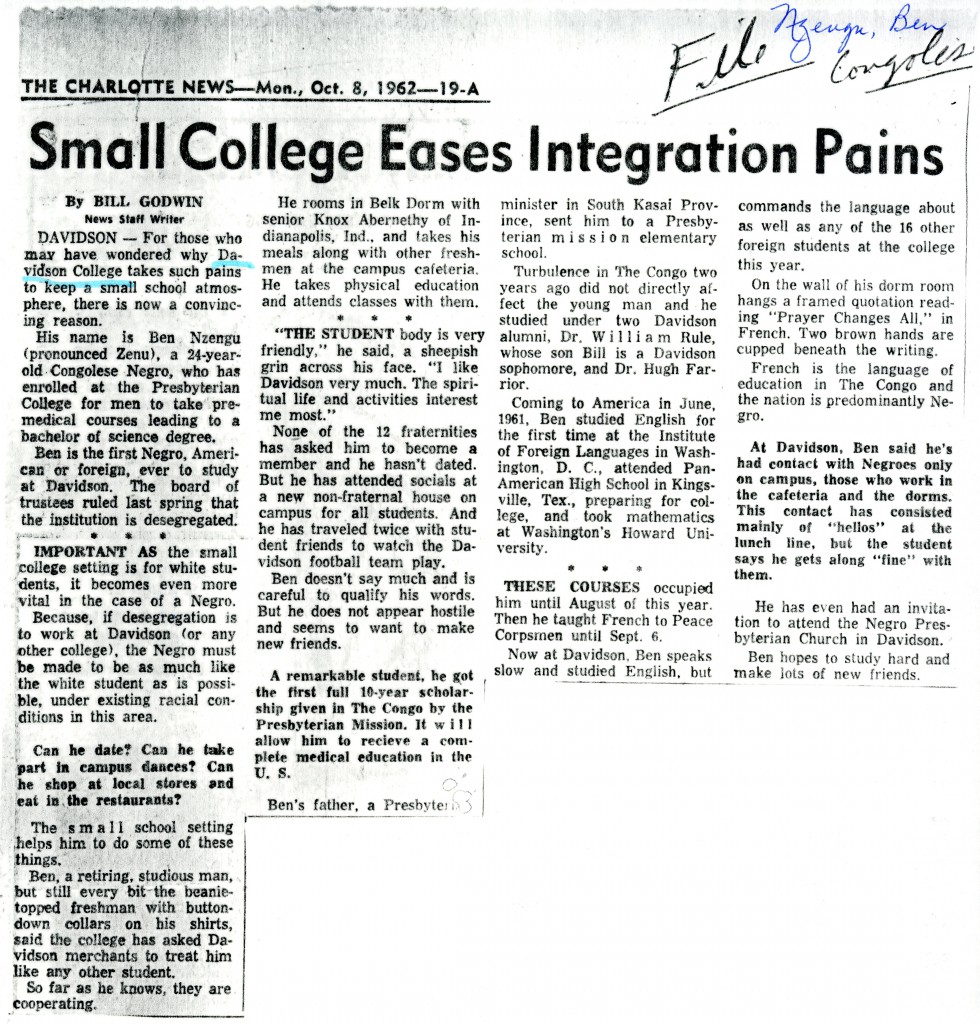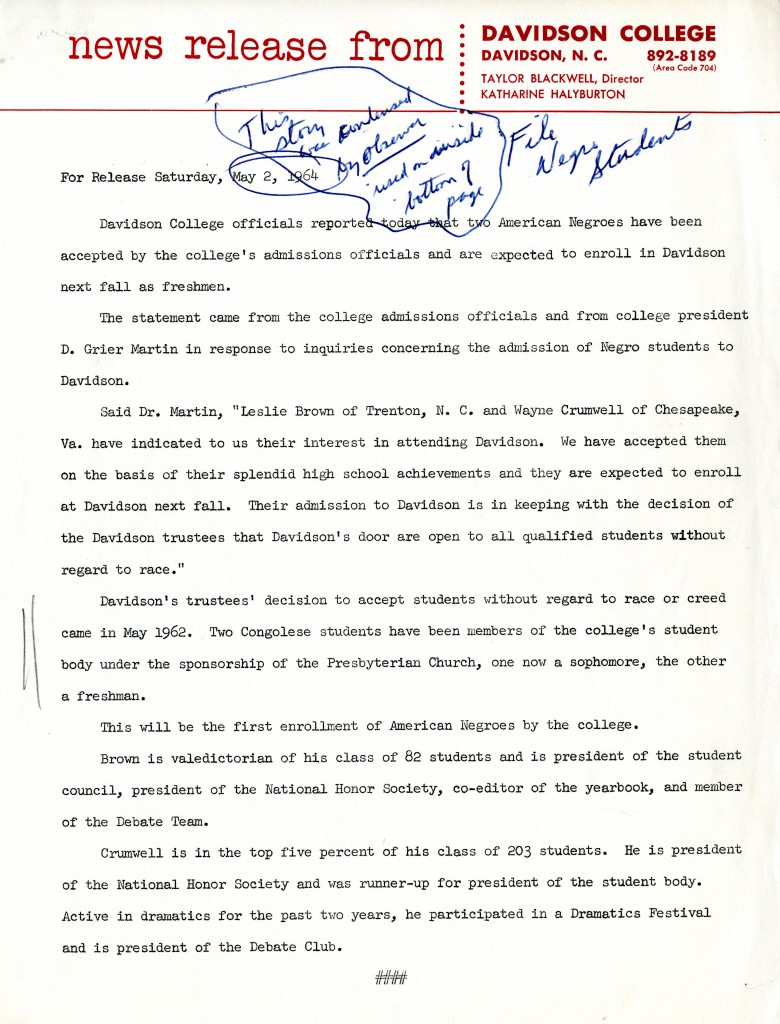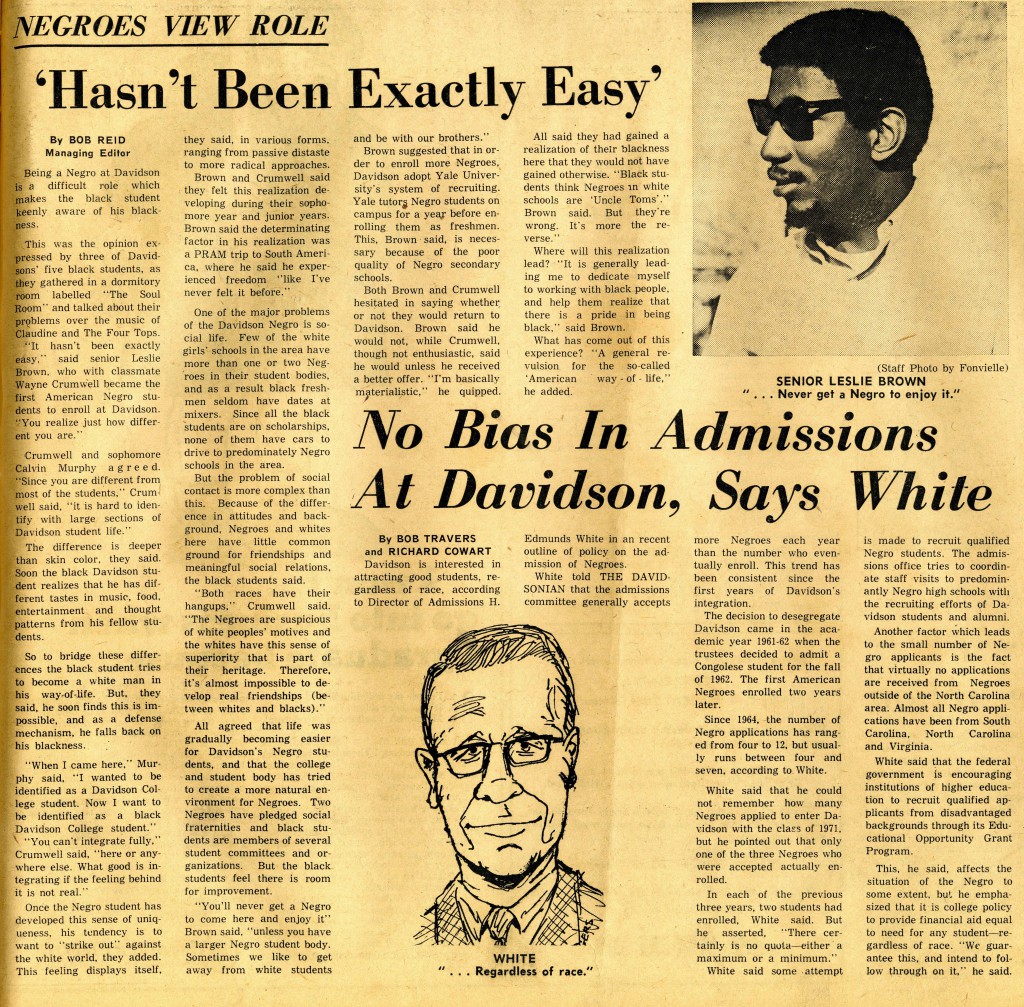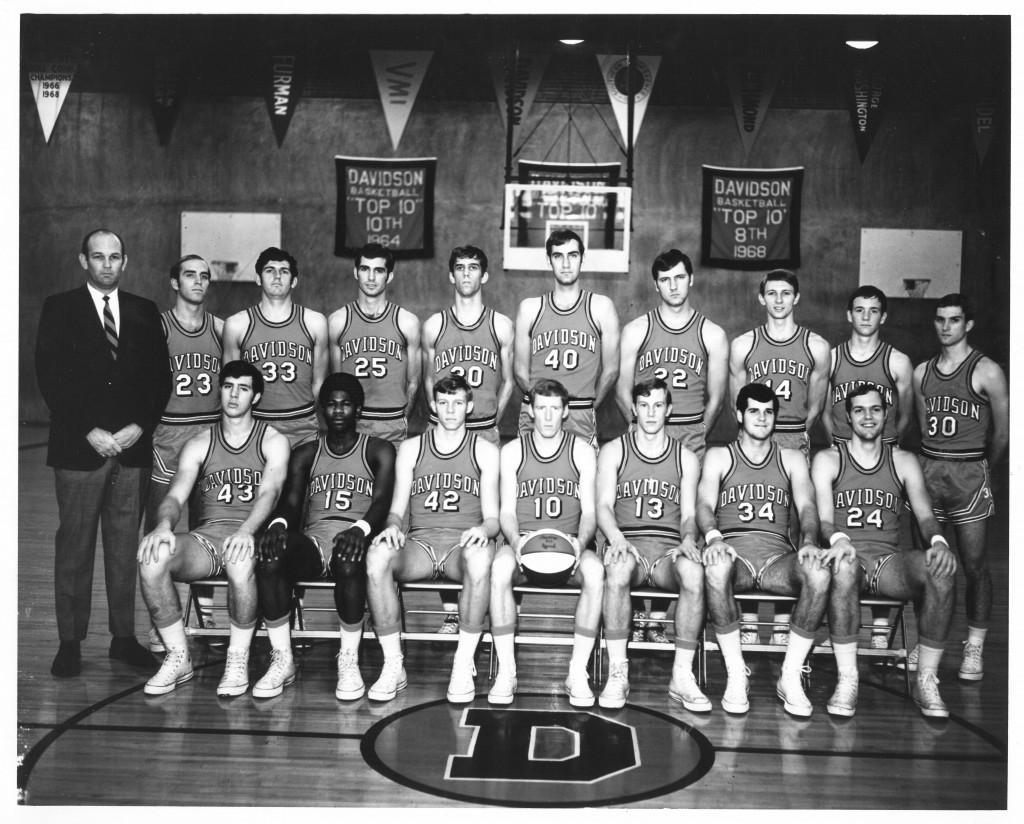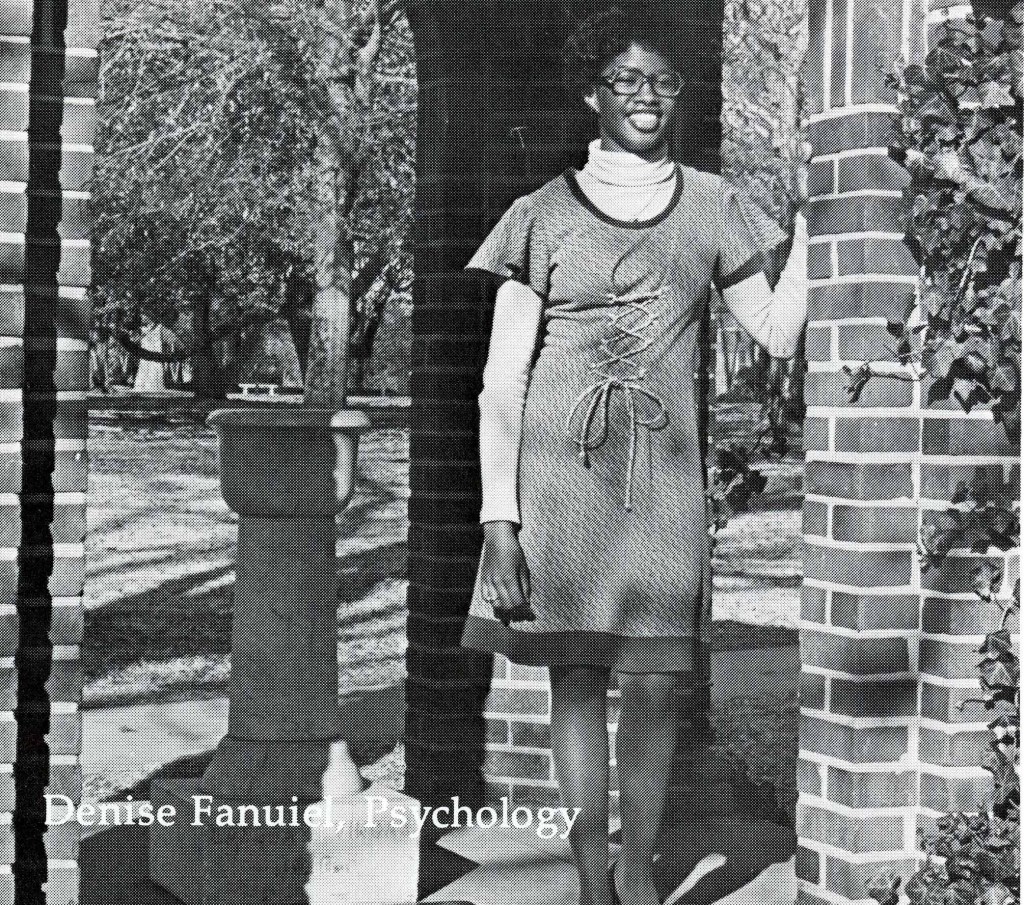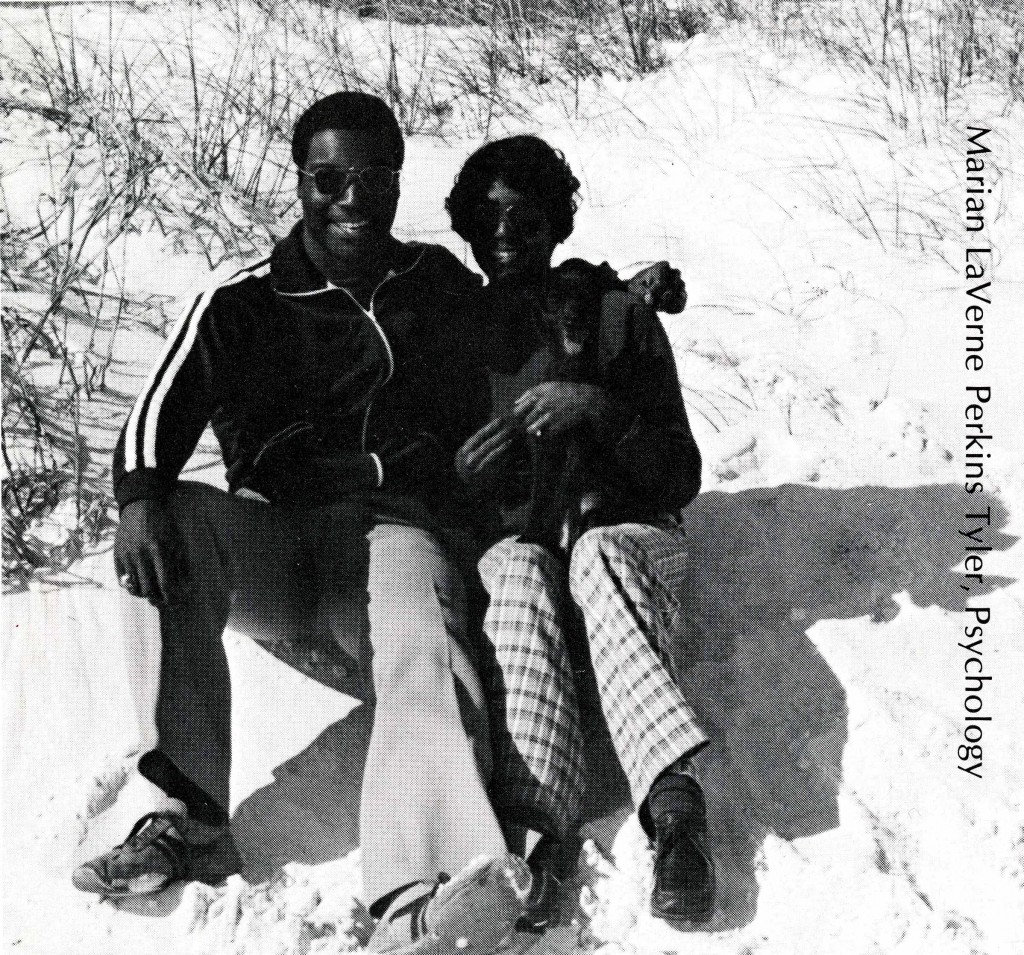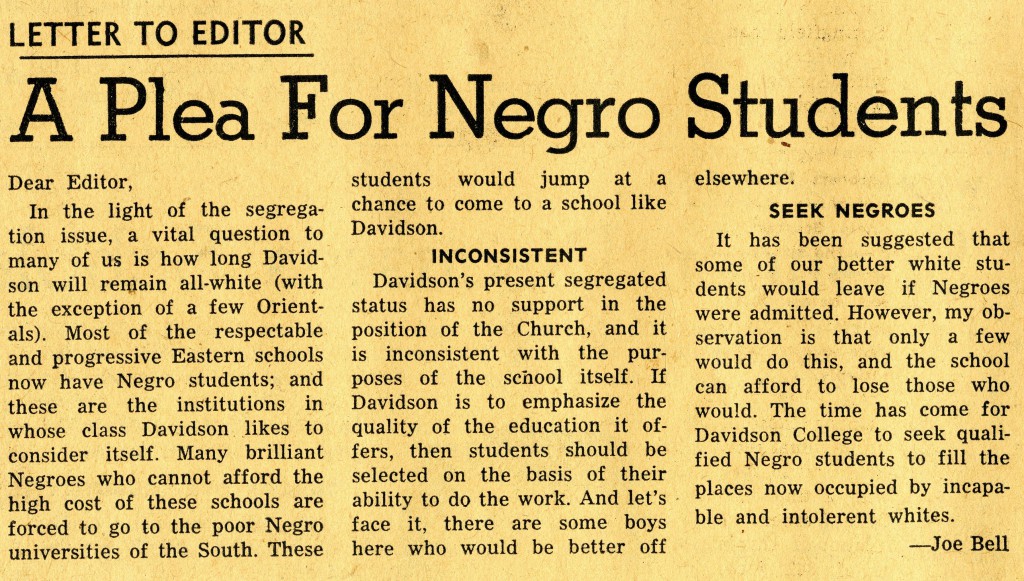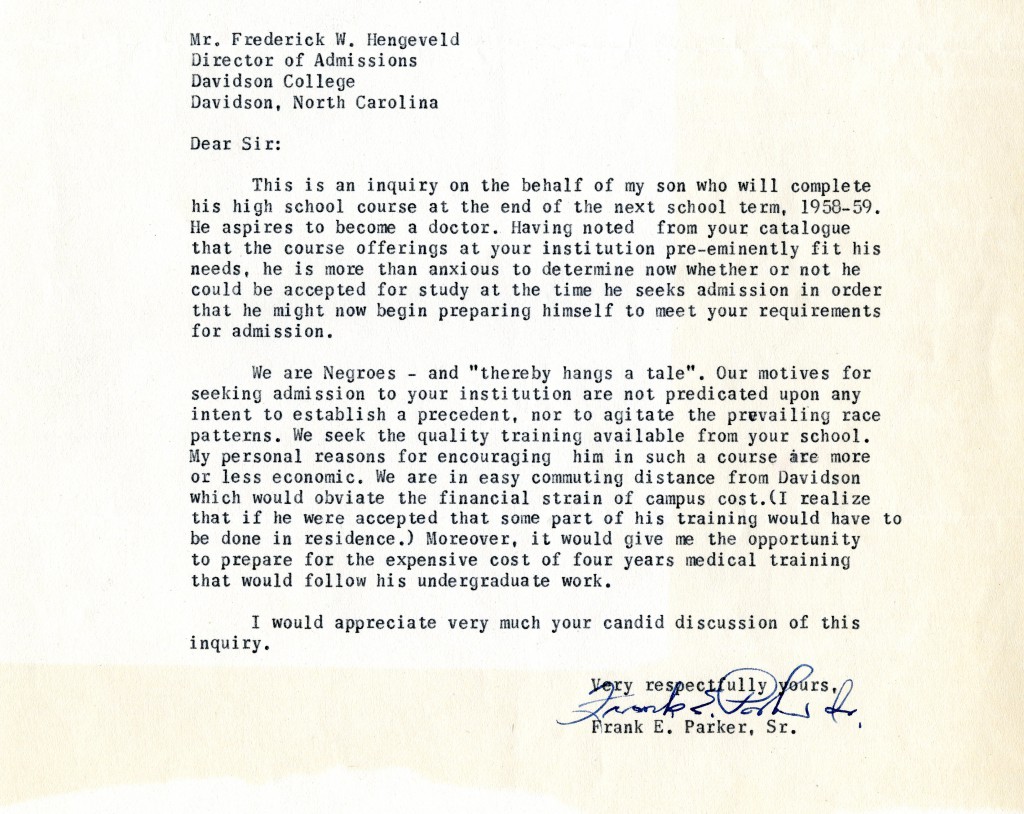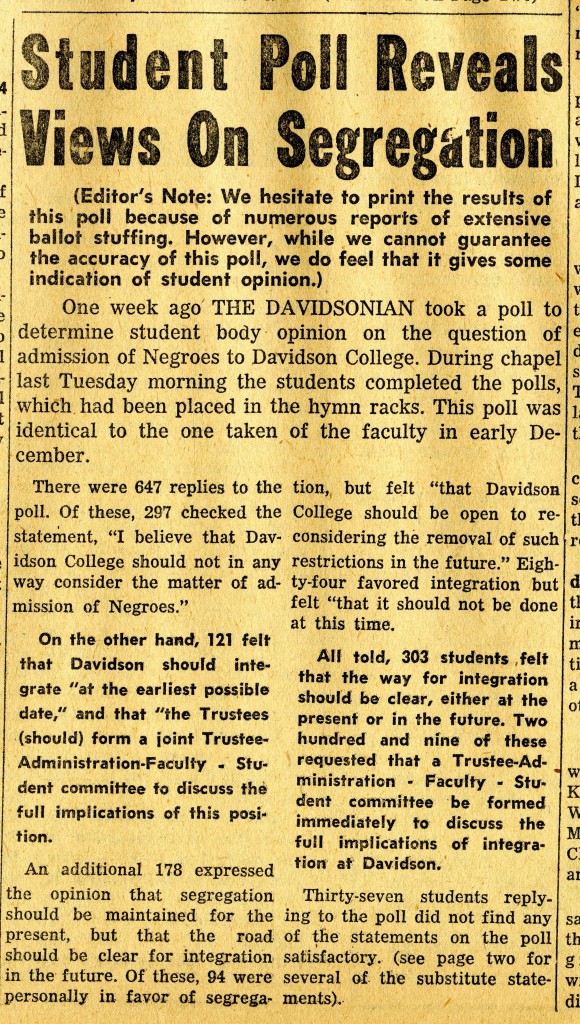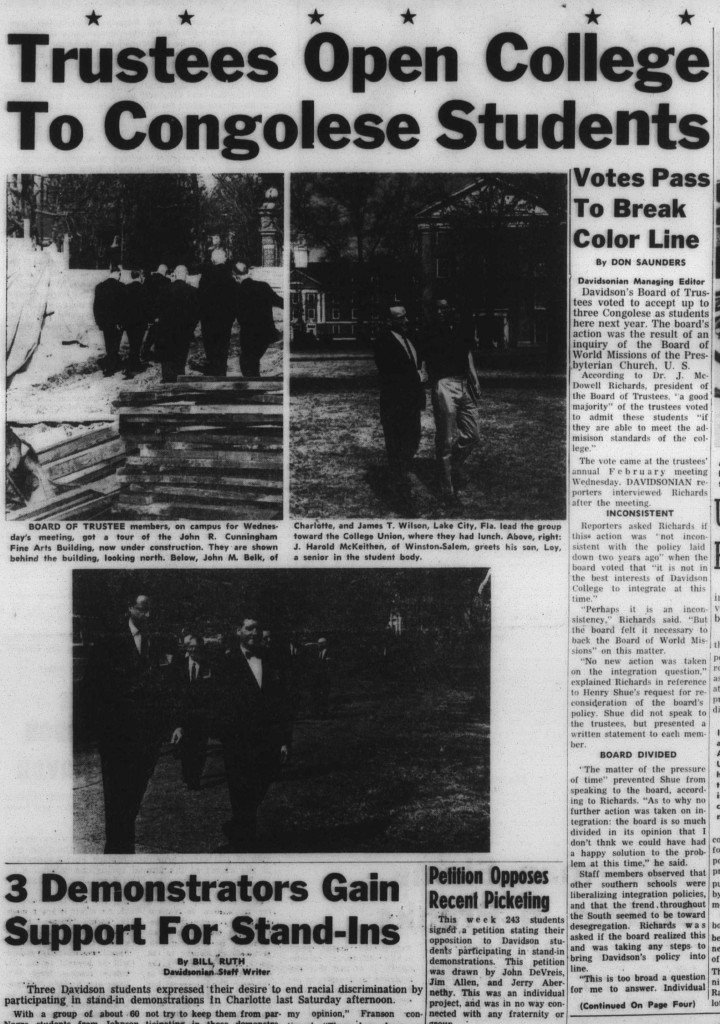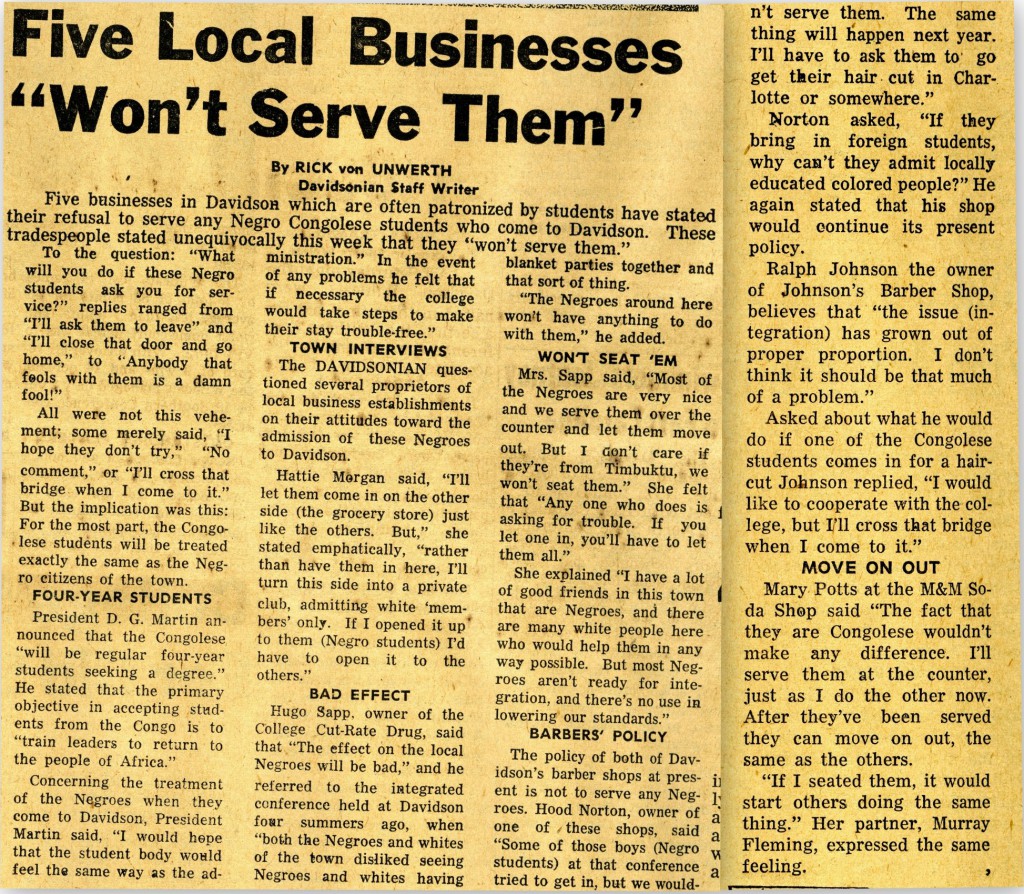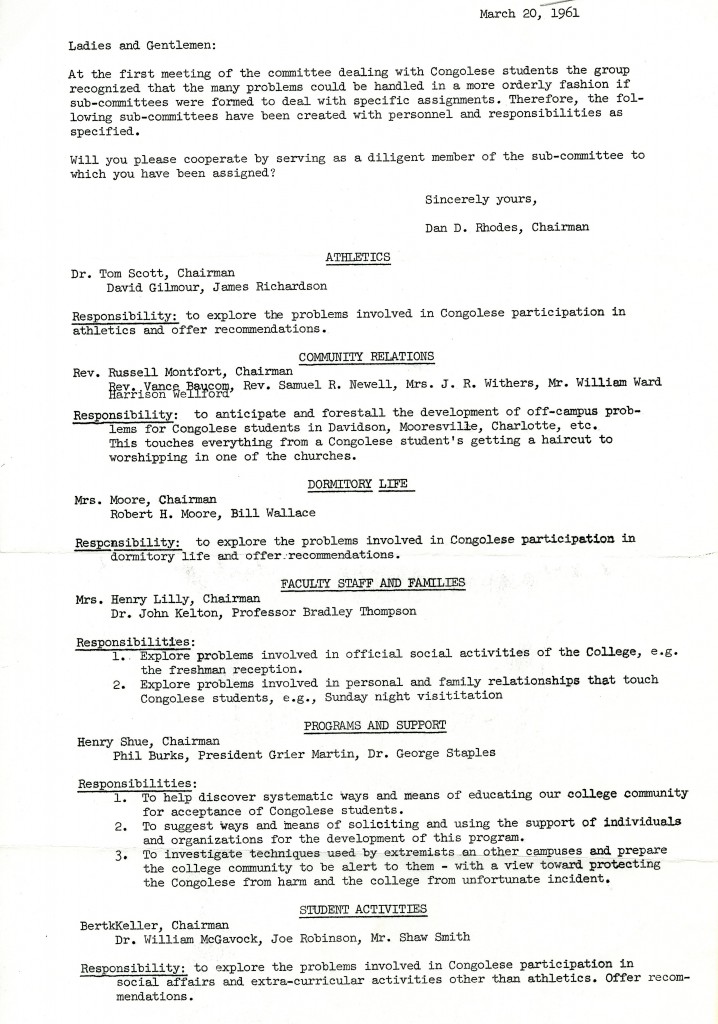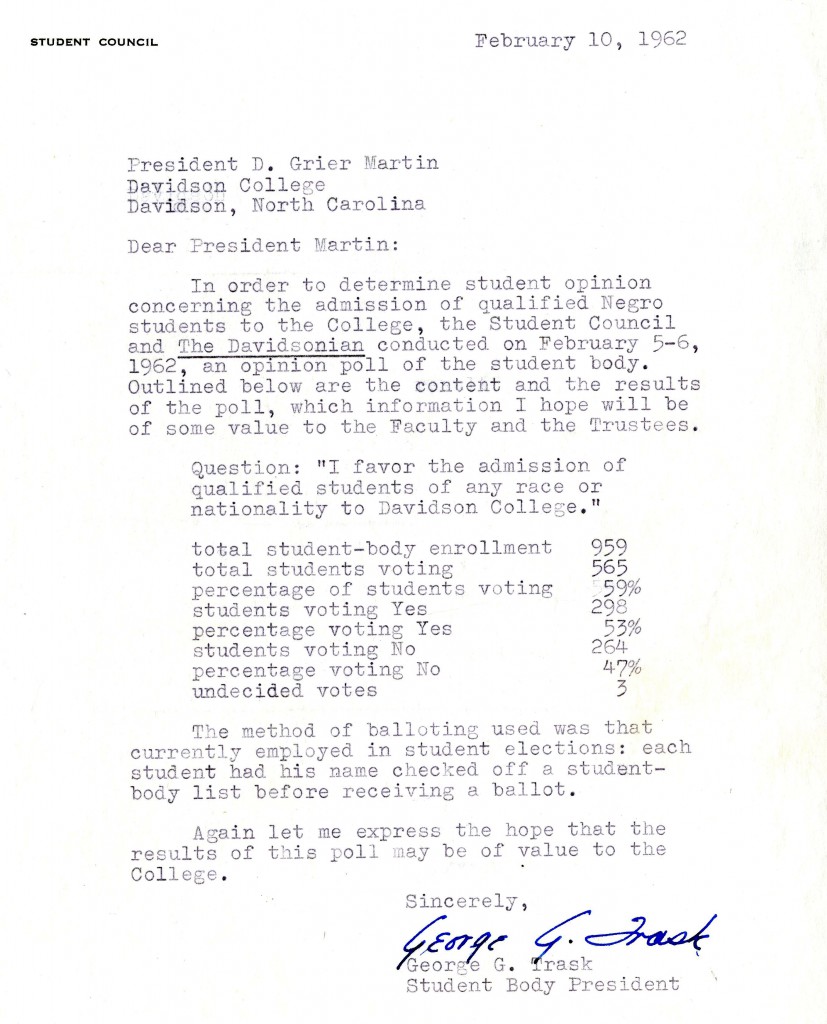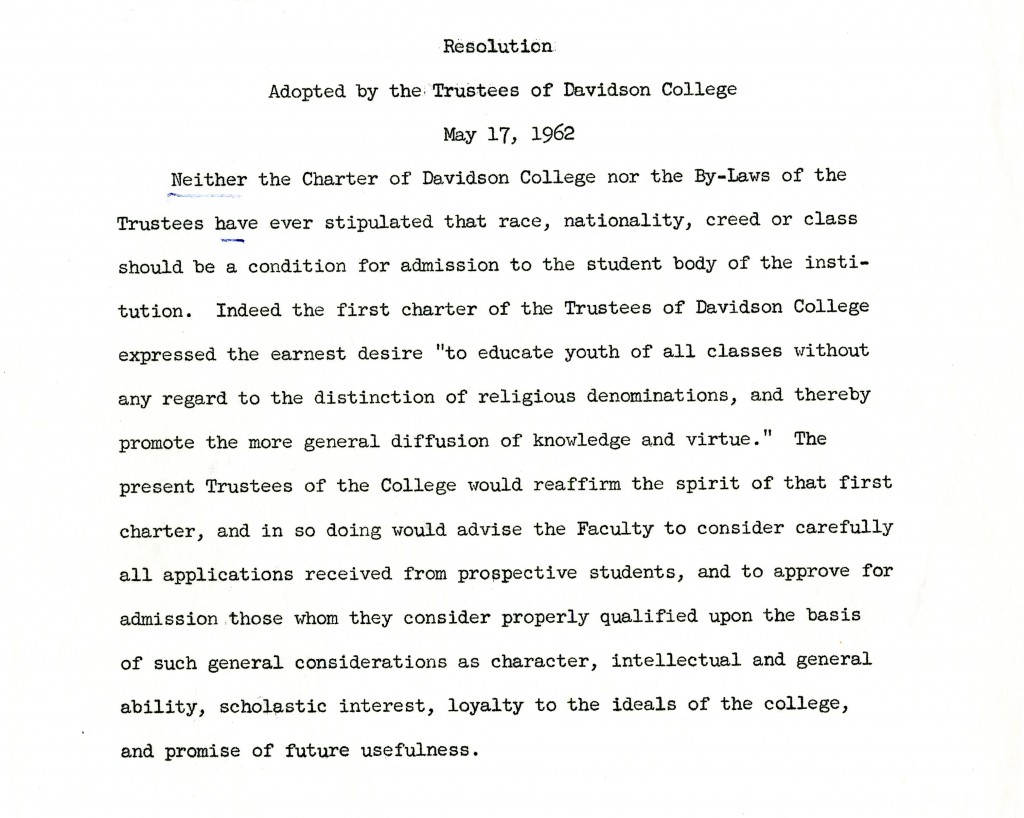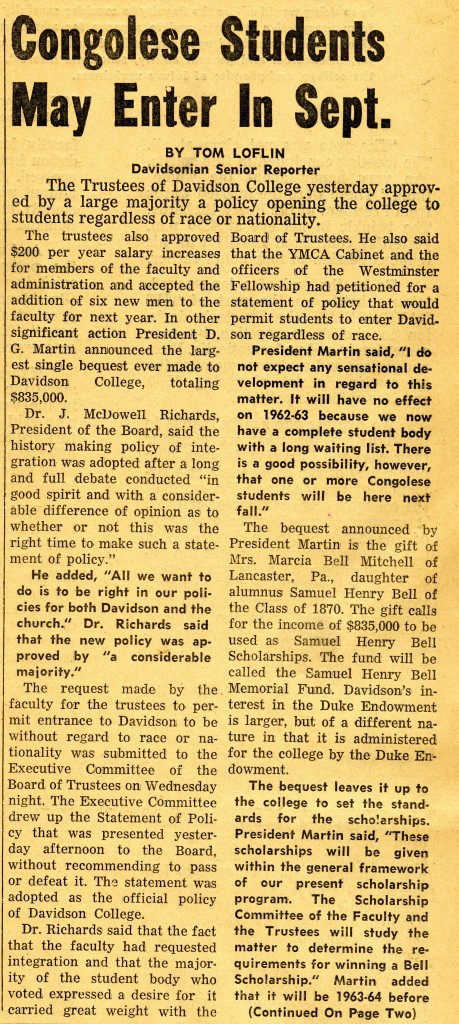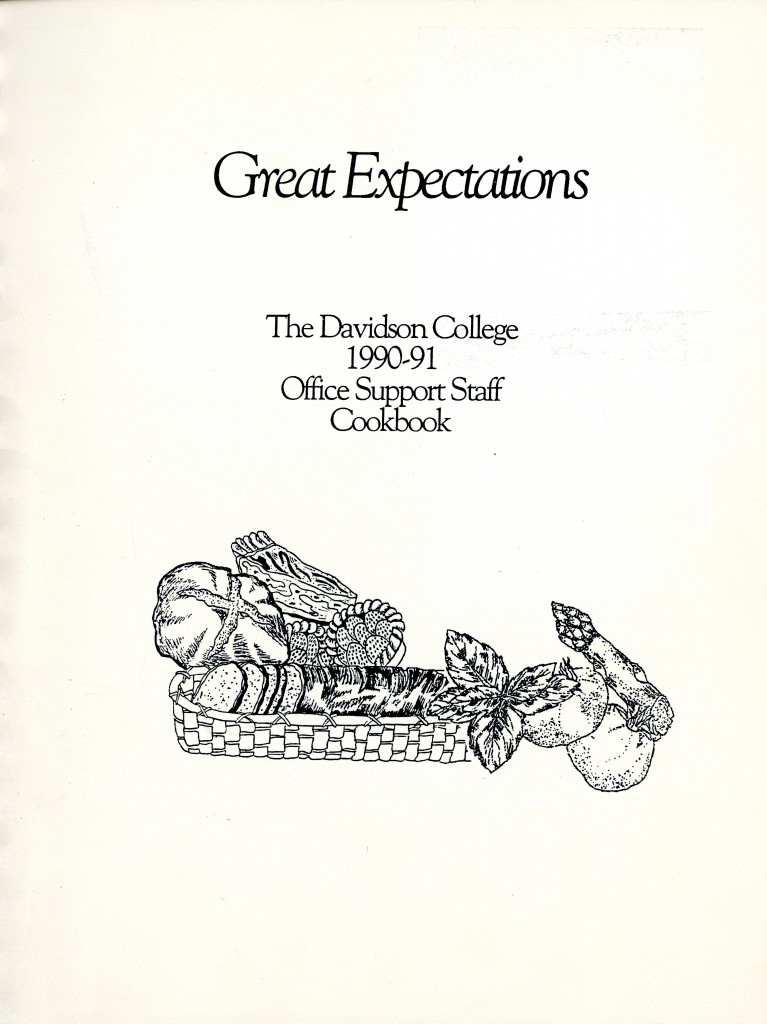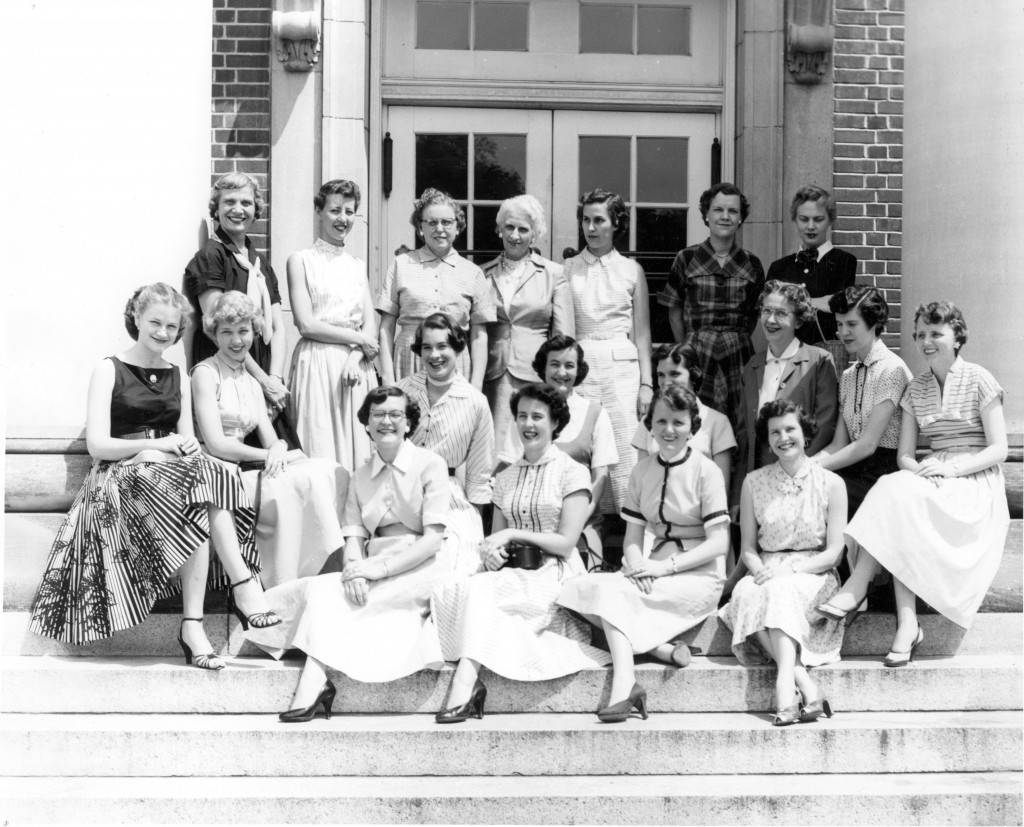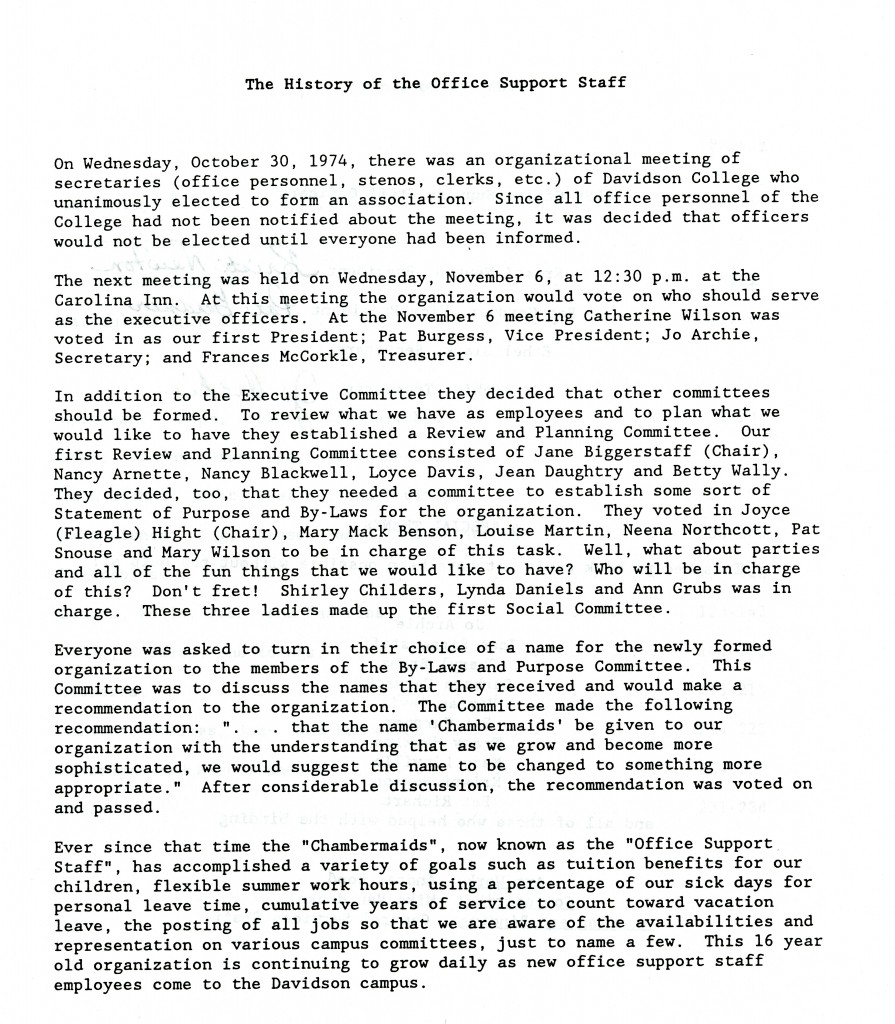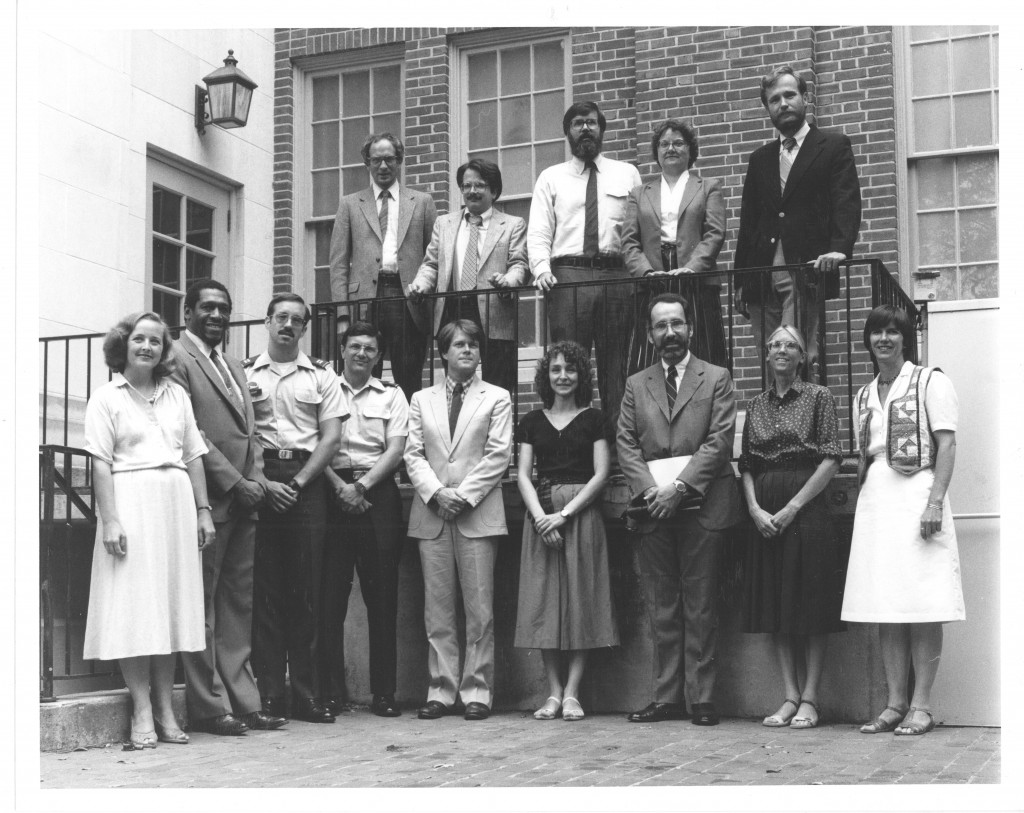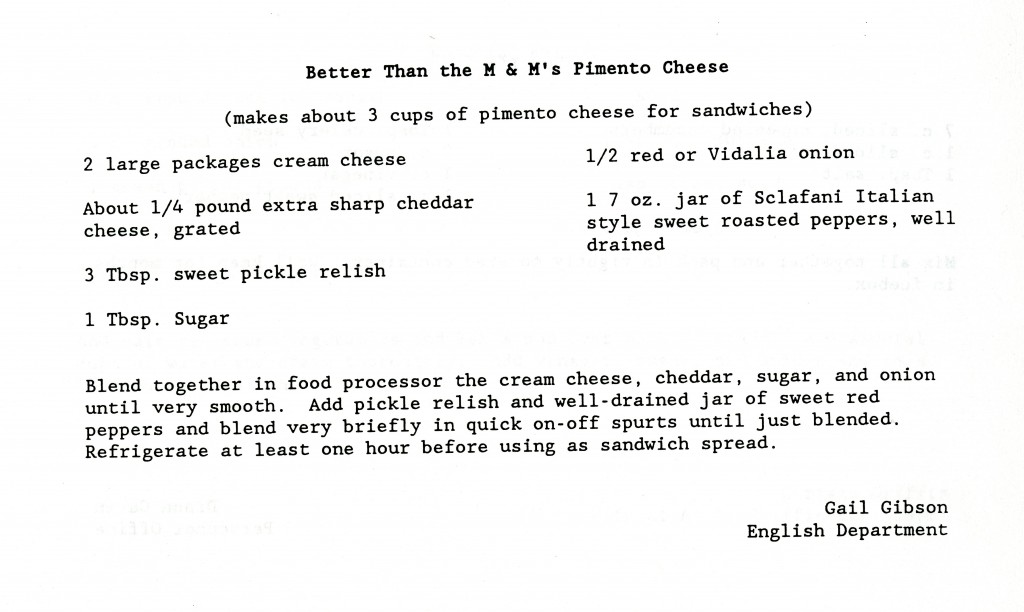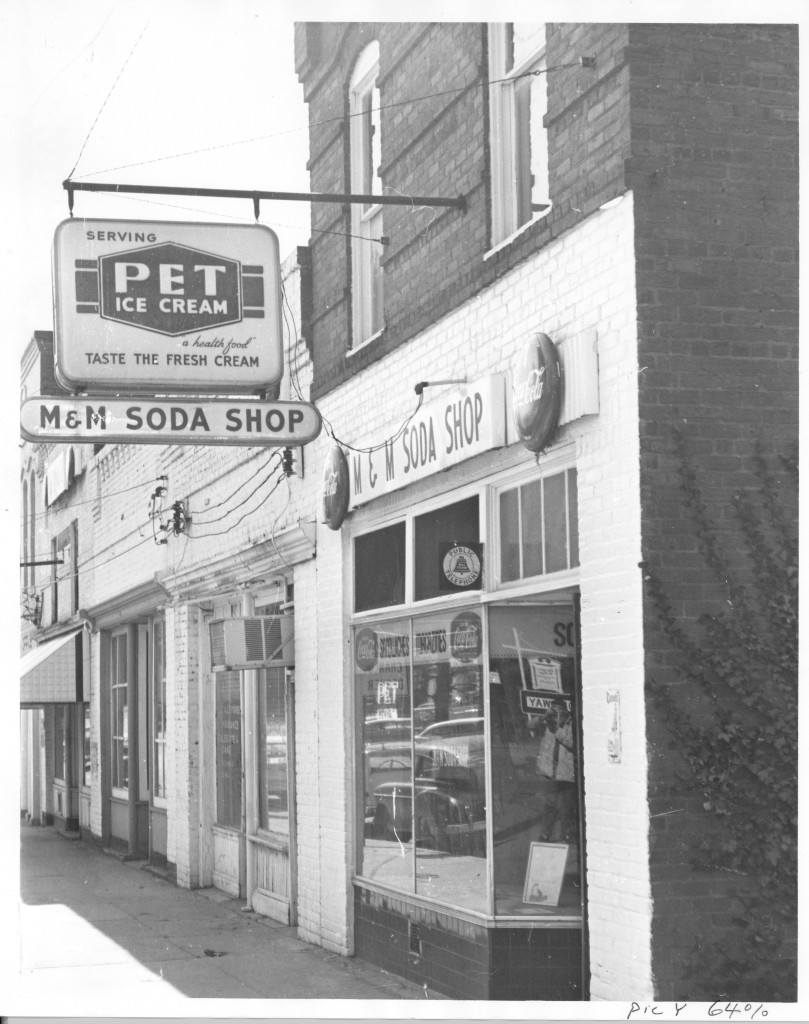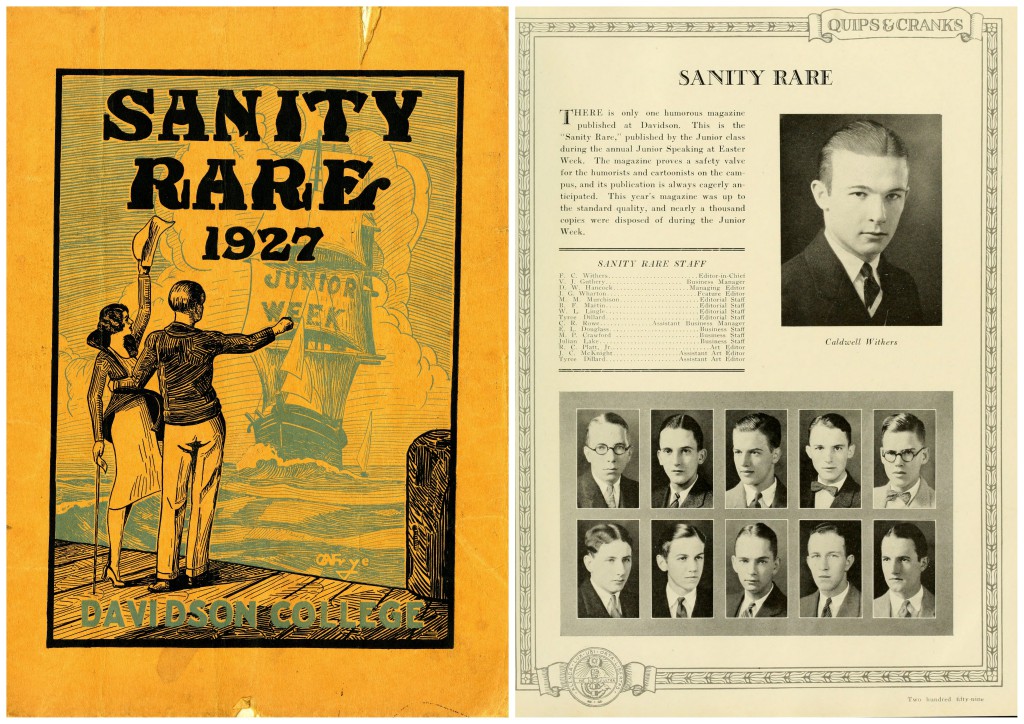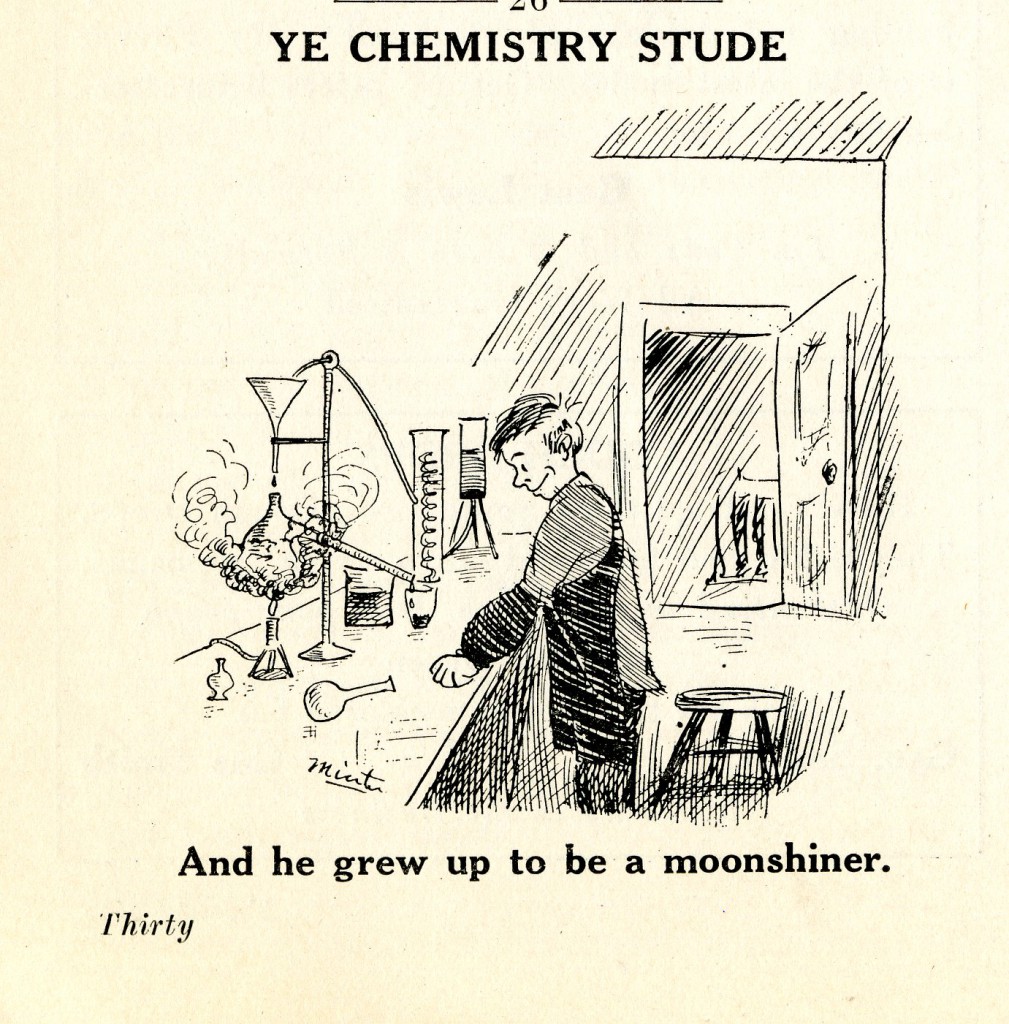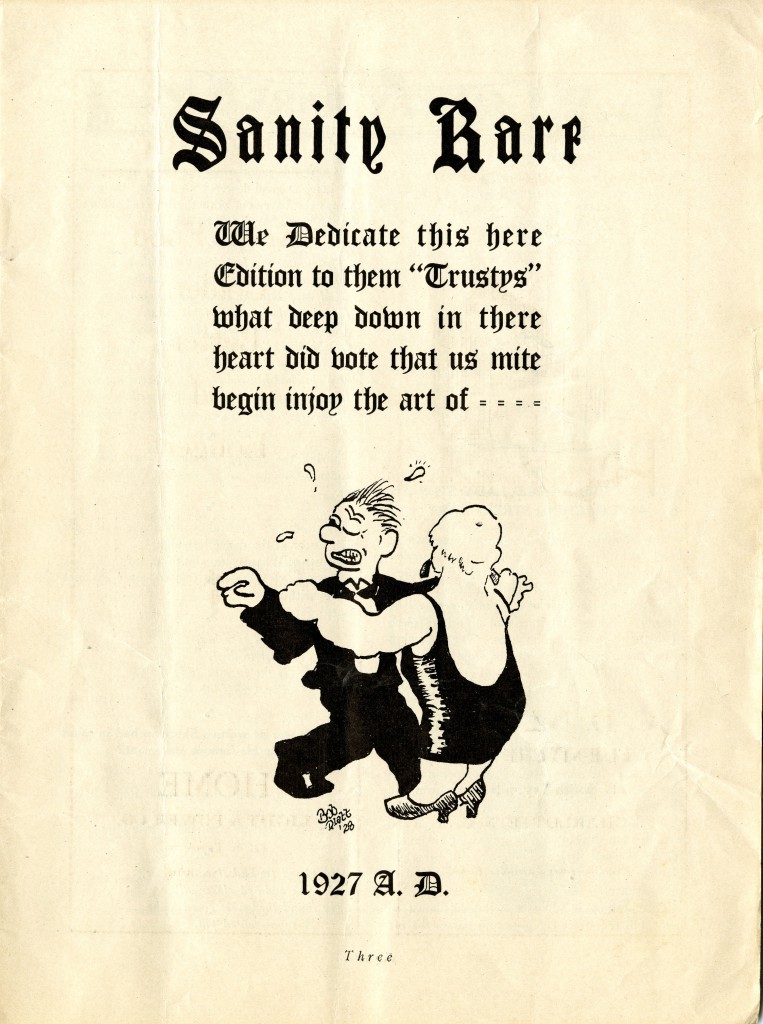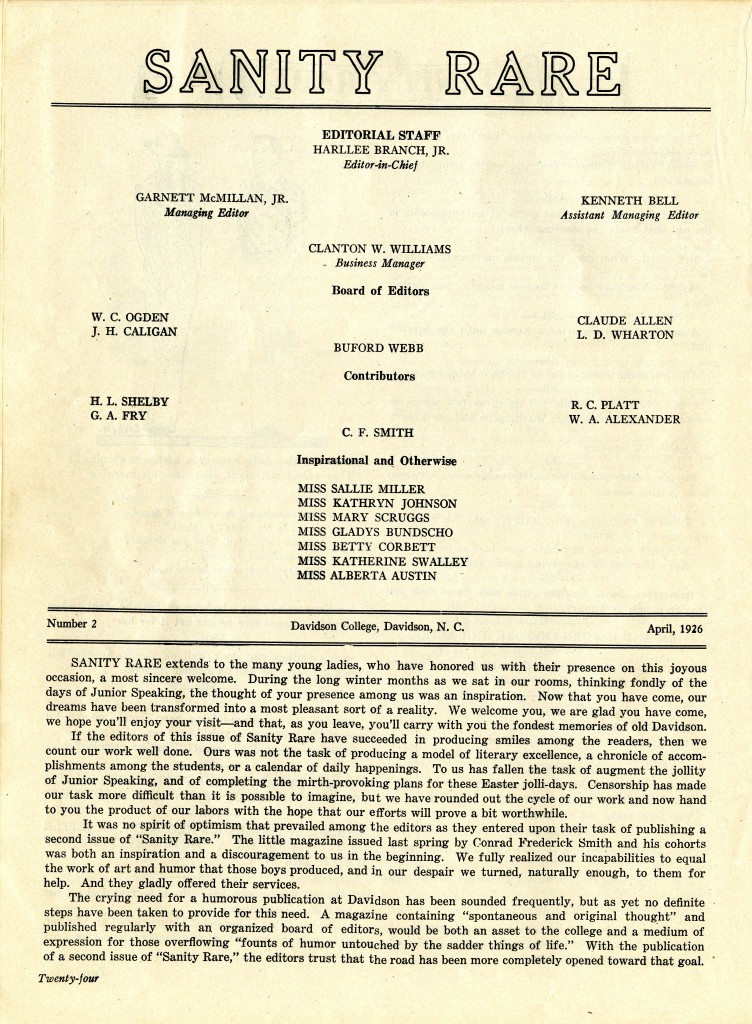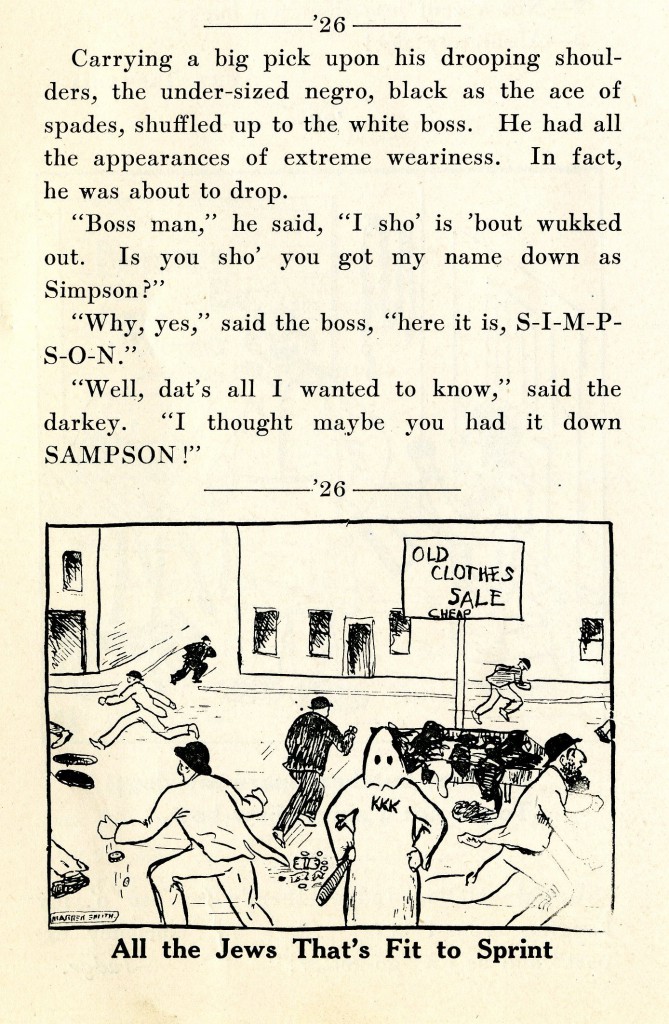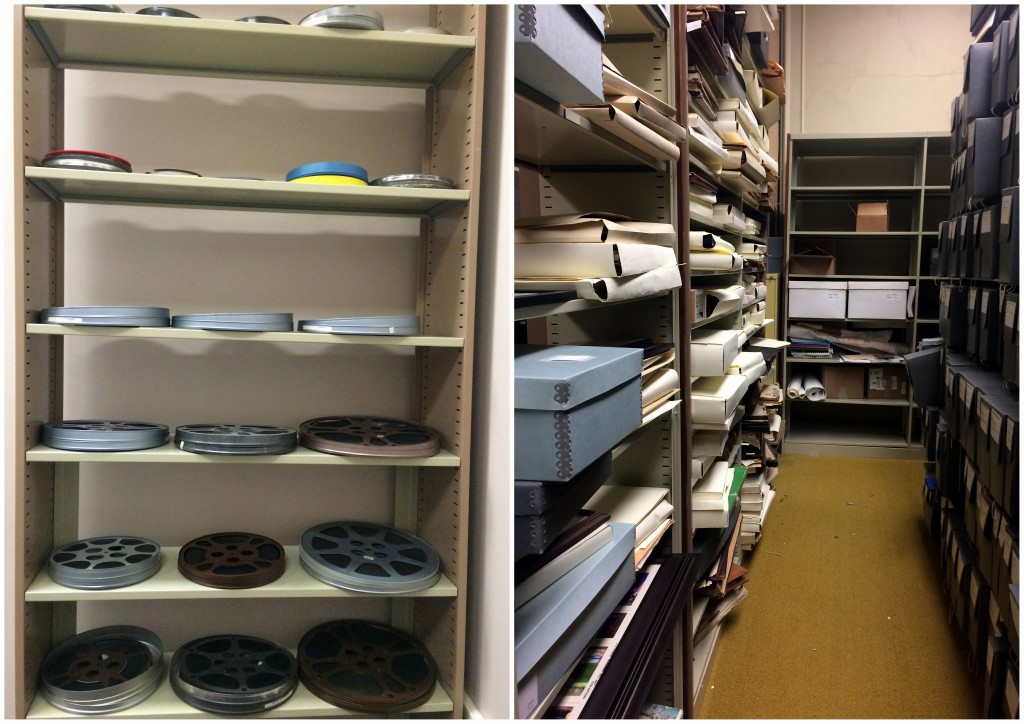For this installment in the Recipes From the Archives blog series, I made Marjorie McCutchan’s “Luscious Brownies,” featured in the Davidson Senior Center’s 1985 printing of The Davidson Cookbook.
Marjorie Munn McCutchan (1903 – 1998) was born in Iowa, and received B.A./B. Music from Tarkio College in Missouri. After completing her studies, she taught at the American Mission School for Girls in Assiut, Egypt. While in Egypt, she met her husband, John Wilson McCutchan (Davidson College Class of 1931, faculty in the English department from 1951 to 1961), and they married in 1936. John Wilson McCutchan (1909 – 1966) taught at Assiut College in Egypt, Queens College (now Queens University of Charlotte), Davidson College, and University of Waterloo in Ontario. By 1961, the McCutchans had divorced and J.W. married again, to Betty Combs Ellington.
Marjorie, John Wilson, and their two daughters (Marjorie Ann McCutchan Clark and Mary Caroline McCutchan Henry) moved to Davidson in 1951. After her divorce, Marjorie spent the 1960s living in Philadelphia, where she attained a M.S. in library science from Drexel University and then worked as a librarian at the Board of Christian Education, United Presbyterian Church. After moving back to Davidson in 1969, Marjorie served as the Acting Head of Reference and Personnel at the Davidson College Library from 1972 to 1974.
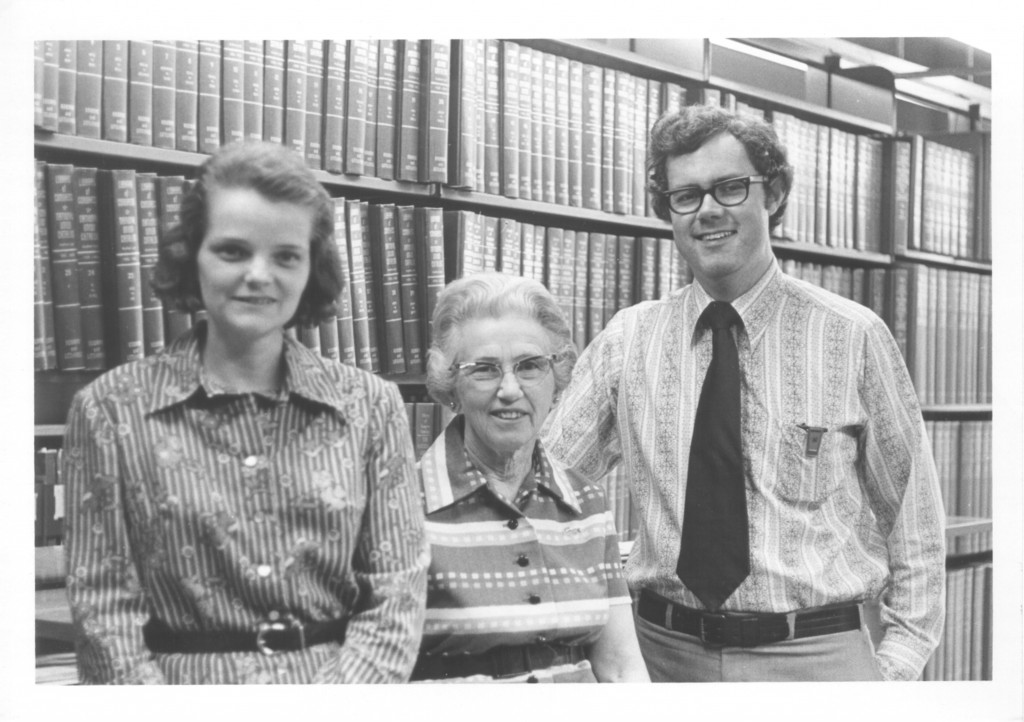
Mary Beaty, Marjorie McCutchan, and Leland Park in front of stacks in the Grey Memorial Library, circa 1972.
In addition to her teaching and library work, McCutchan worked as a piano instructor and was very active in the local Presbyterian community, serving as the first woman elder at the Davidson College Presbyterian Church (DCPC). She was one of the first residents to move into The Pines, the local retirement community, in 1988, and also was a member of the Davidson Senior Center. When photographed by Frank Bliss for the Davidson Senior Center, she wrote on her portrait information sheet that she “Returned to America at time of 2nd World War on S.S. Aquitania via Australia then to California, so I’ve been around the world.”
She donated funds to the library in 1988, establishing the Marjorie McCutchan Fund, which has allowed to library to purchase 80 titles.
I chose to make McCutchan’s “Luscious Brownies” for the retirement party of my library colleague, Jean Coates. I selected the recipe because it sounded delicious, and making one former Davidson librarian’s recipe to celebrate the retirement of another Davidson librarian seemed very apropos.
I didn’t deviate from this recipe very much – I was even able to use Eagle Brand sweetened condensed milk! I made two batches of these brownies, one with walnuts and one without. The texture of these brownies is different than what I’m used to – the condensed milk and crushed graham crackers made the batter very thick and much harder to pour than I was expecting. I also ended up using a muffin pan to make the batches of brownies, since I didn’t have a metal pan of an appropriate size on hand. The most onerous and time-consuming part of the process was crushing the graham crackers – I broke the crackers into smaller pieces and then smushed them with a meat tenderizer to end up with a finely crushed product. I would recommend melting the chocolate chips prior to mixing the ingredients, a step McCutchan didn’t mention.
Overall, this recipe was a crowd-pleaser – I was even asked for the recipe by one faculty member who sampled them!
